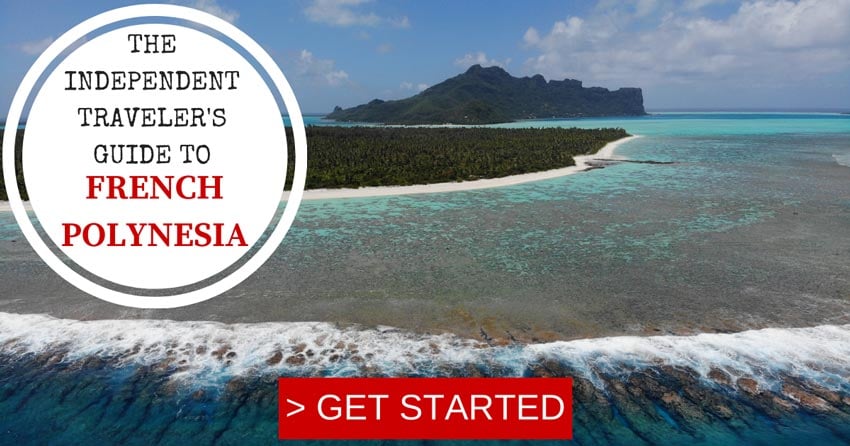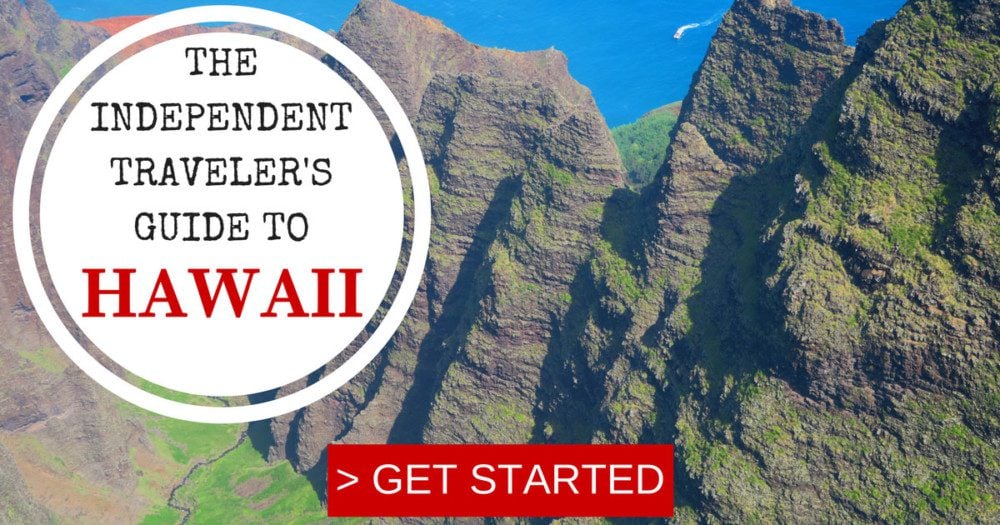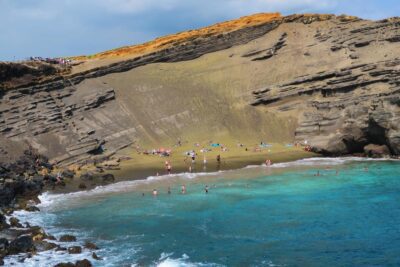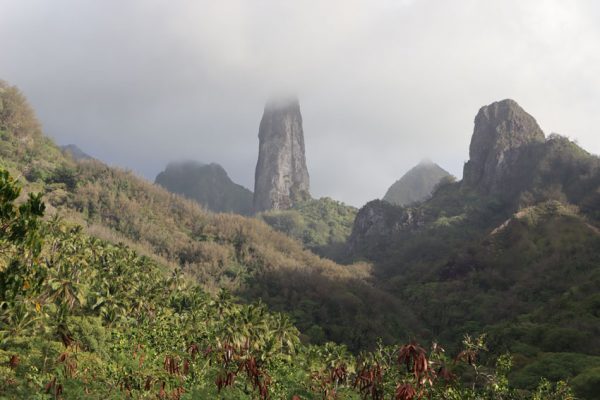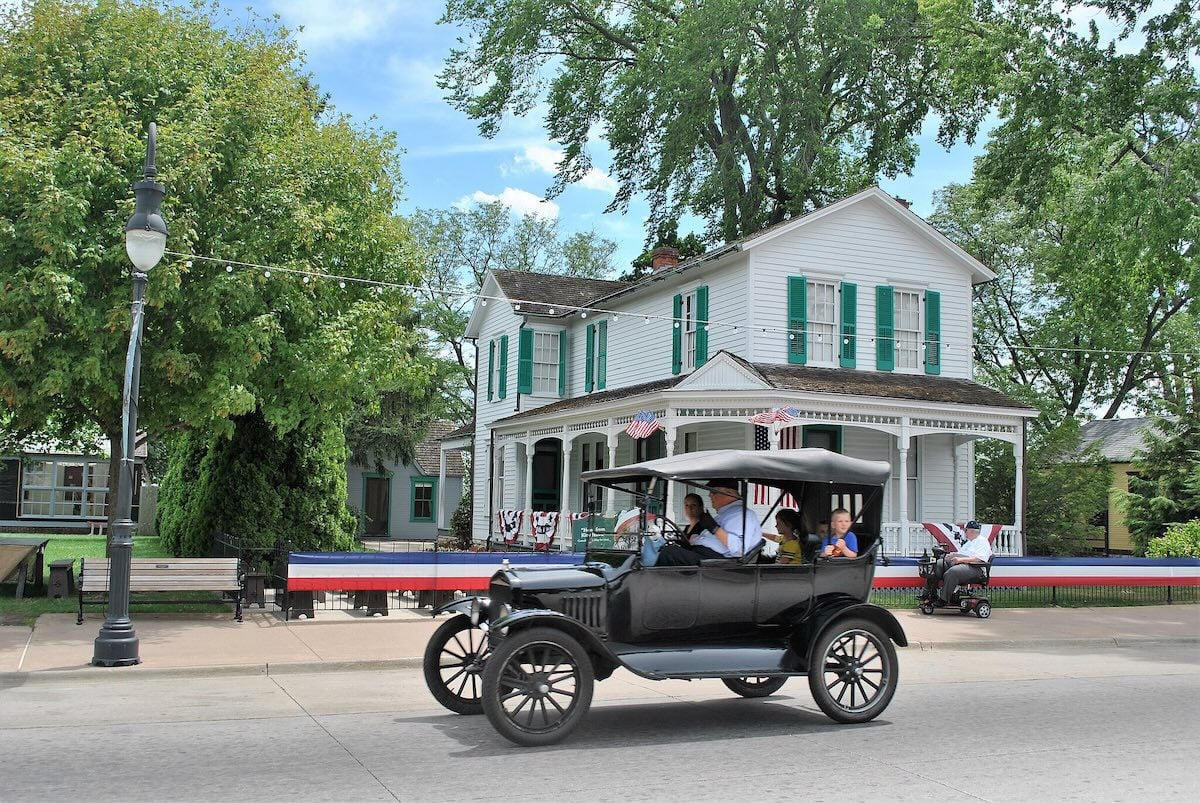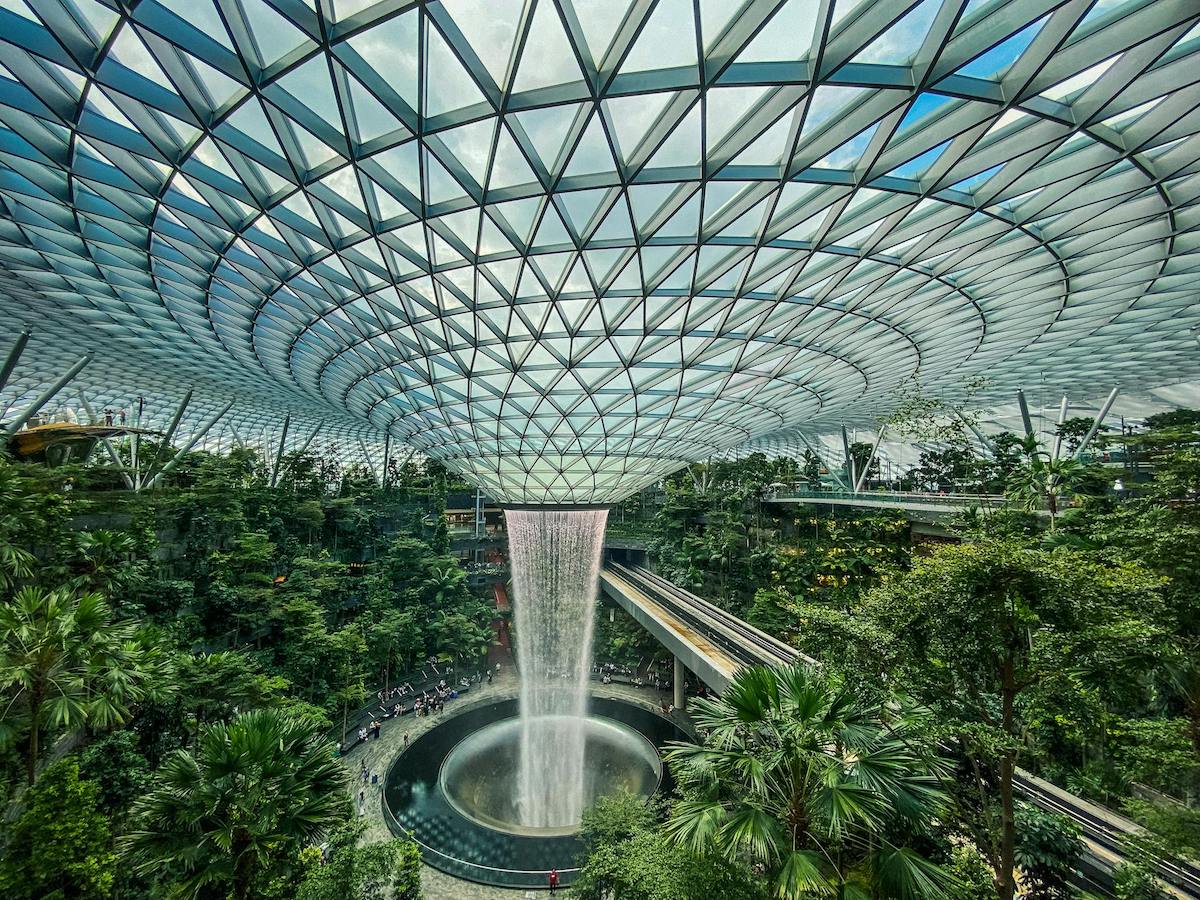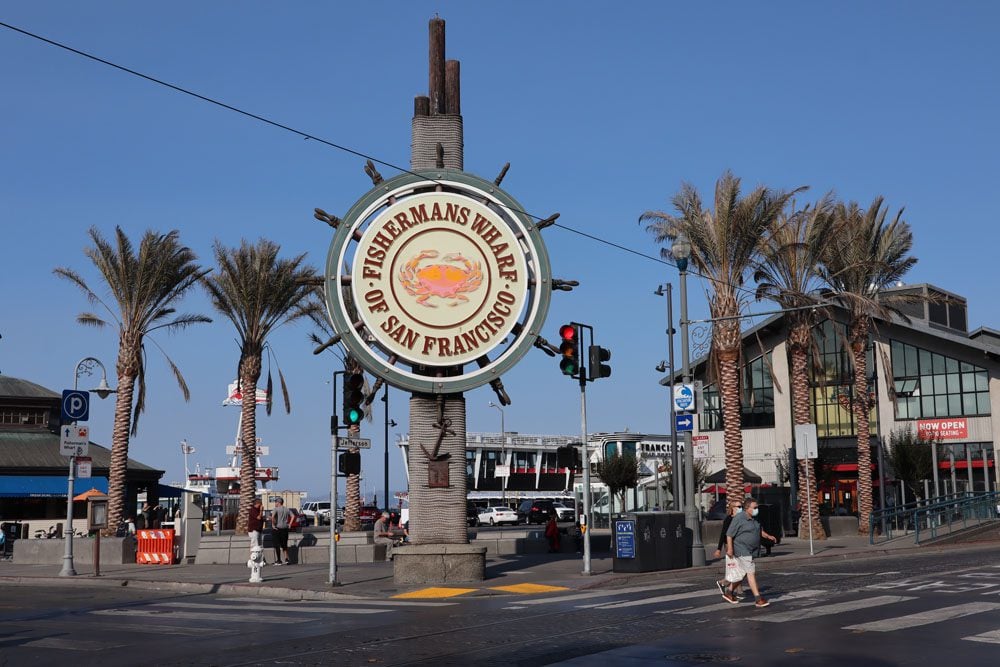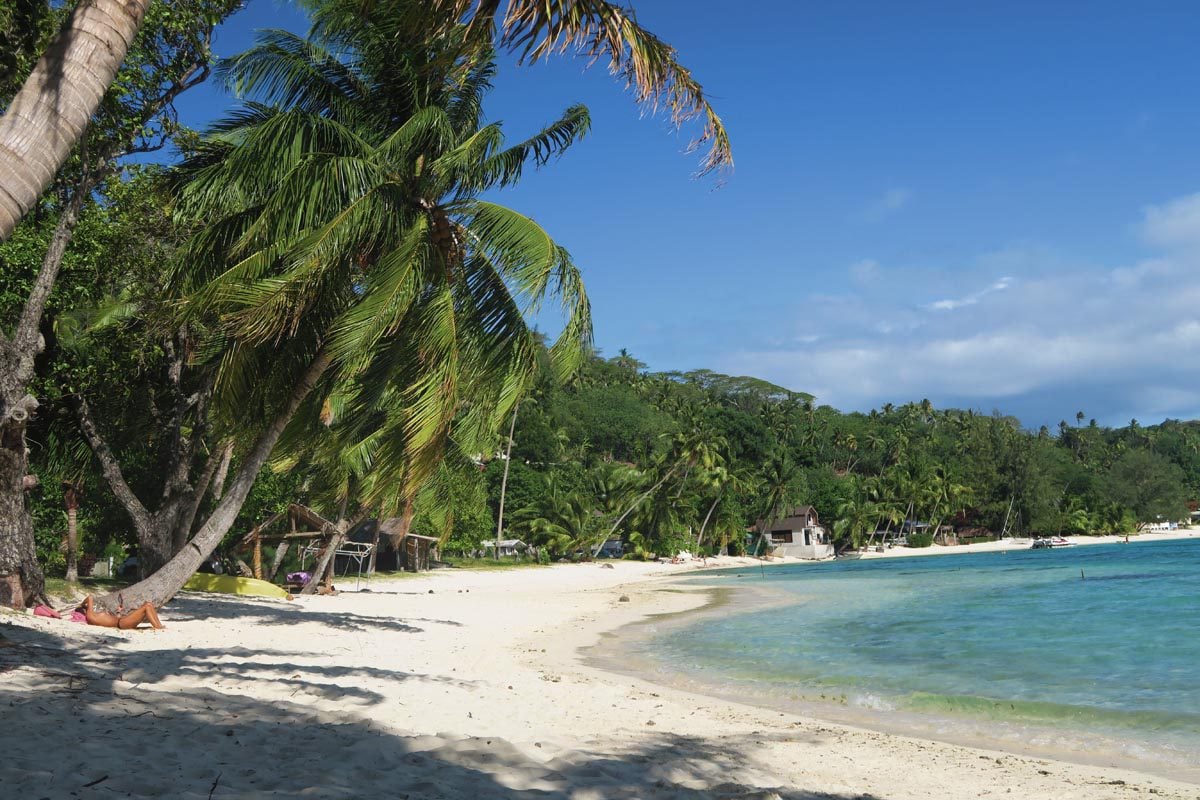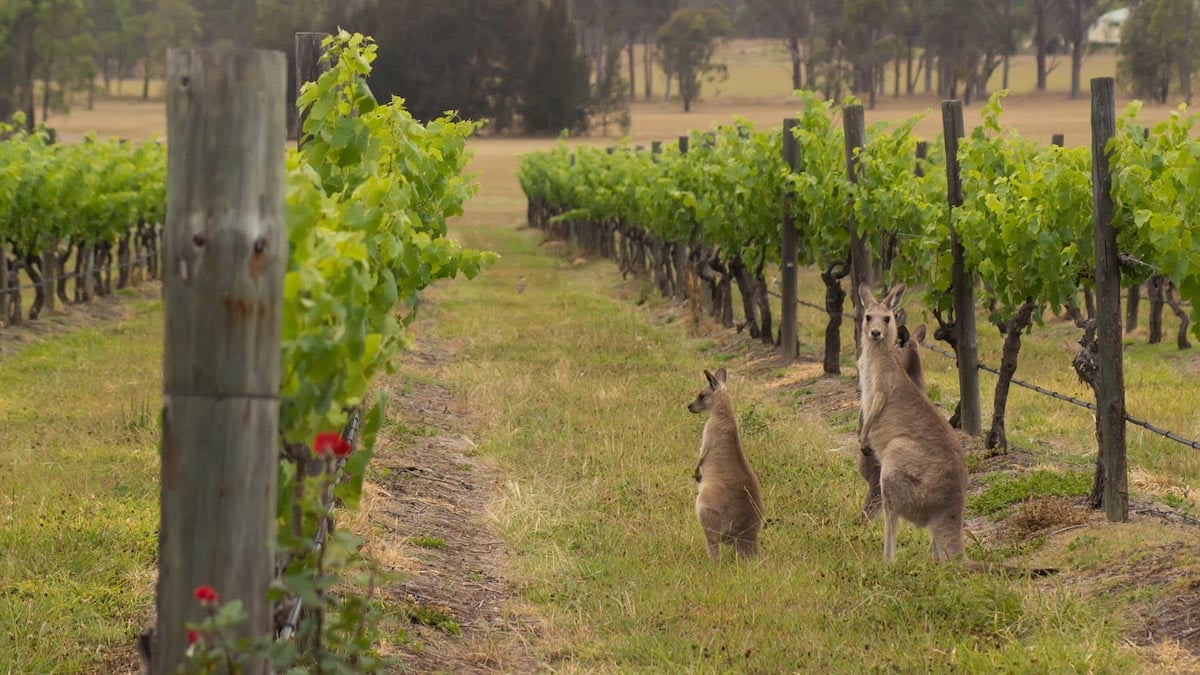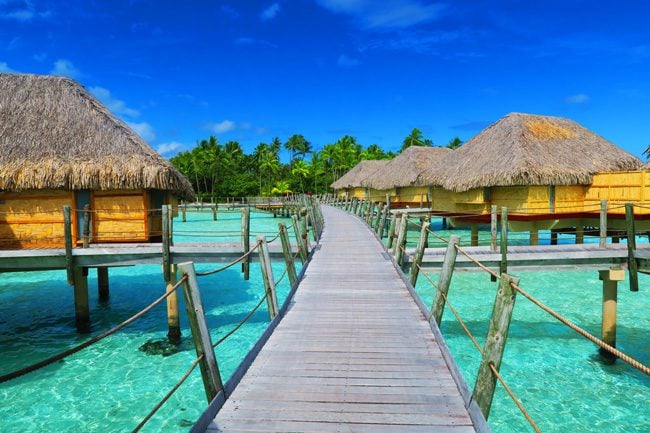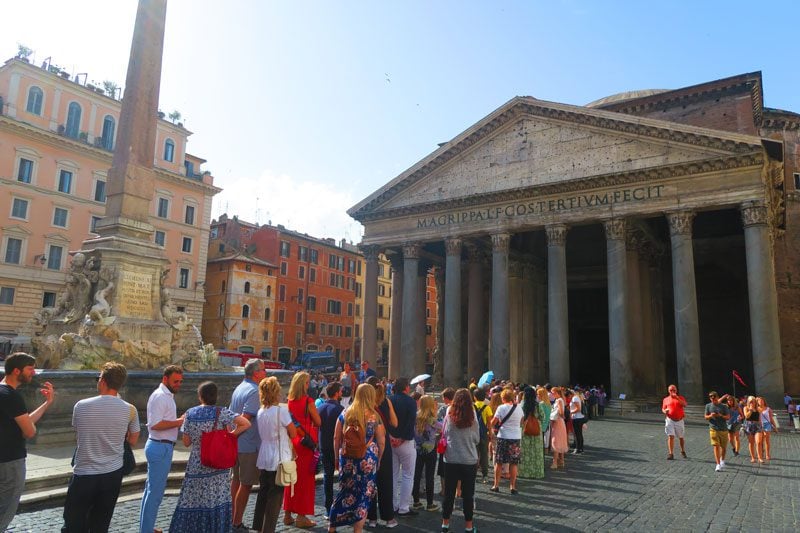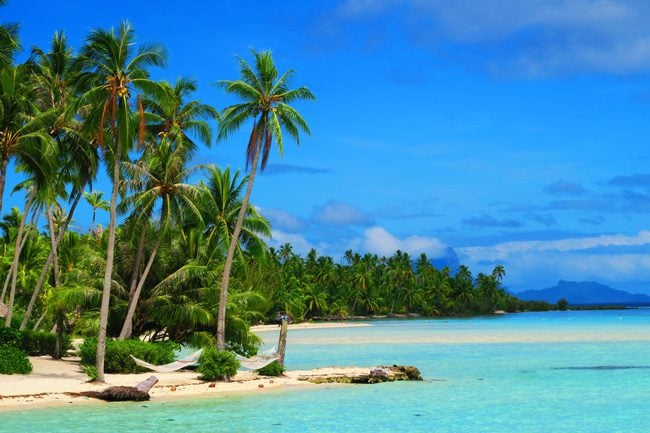Hawaii Or Tahiti: Which Paradise To Choose?
If you’re reading these lines, you are a very lucky traveler but one that is also faced with a very tough dilemma. Tahiti or Hawaii? Which paradise to choose? While both destinations are have all the ingredients for a magical tropical dream, it’s important to check which is more suitable for your needs, desires, and expectations. I spent both four months in Hawaii and I’ve visited the Islands of Tahiti seven times. In this guide, I’ll share with you the pros and cons of both, and help you make the call whether to visit Tahiti or Hawaii.
Before we begin, it’s important to note that even though Tahiti is the main island in French Polynesia, it is often used to refer to the entire territory (Islands of Tahiti). It’ll be used interchangeably throughout this post.
Tahiti & Hawaii Travel Guides
Click on the images below to enter an extensive collection of travel guides to over a dozen islands in French Polynesia and all of Hawaii’s major islands.
The Best Islands in Hawaii
Watch this video countdown of the top 5 islands in Hawaii (you might need to disable your ad blocker).
Why choose Hawaii over Tahiti?
Here are some of Hawaii’s main advantages over the islands of Tahiti.
Closer to the Mainland
Flight time to Honolulu from Los Angeles or San Francisco is just under six hours when compared with 8.5 hours to Tahiti. It’s not a huge difference but can be the “tie-breaker” for some, especially if traveling with children on a family holiday. My advice: unless you really hate flying, don’t let this be the deciding factor.
you can see fresh lava
At least one of Hawaii’s islands is still growing, and it’s an incredible experience to see live it in action. The Kilauea Volcano in the Big Island of Hawaii is currently the most active volcano in the world. Several lava viewing areas might be open during your visit to Hawaii, depending on the extent of the current eruption. In comparison, Tahiti’s islands are much older and thus have no active volcanic activity (apart from at least one active underwater volcano).
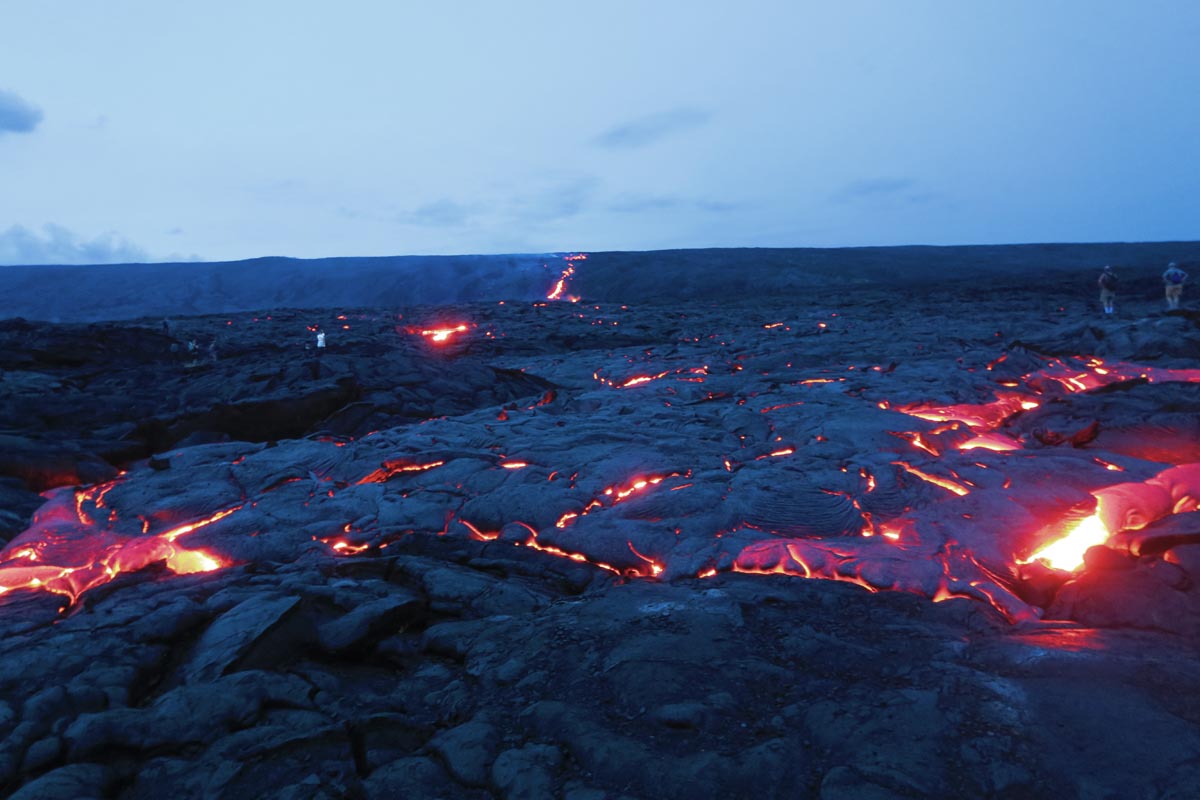
Diversity of Microclimates & Landscapes
Each of Hawaii’s six main islands has several microclimates, sometimes within a very short distance of each other. These range from desert-like landscapes, scenes from a NASA image of Mars, tropical rainforests, “Grand Canyons”, and even snow! The most diverse of the Hawaiian islands is the Big Island of Hawaii, home to 11 of the 13 microclimates that exist on our planet. In Tahiti, you’ll need to travel to the distant Marquesas Islands to experience such diversity, especially the islands of Nuku Hiva, Ua Pou, and Ua Huka
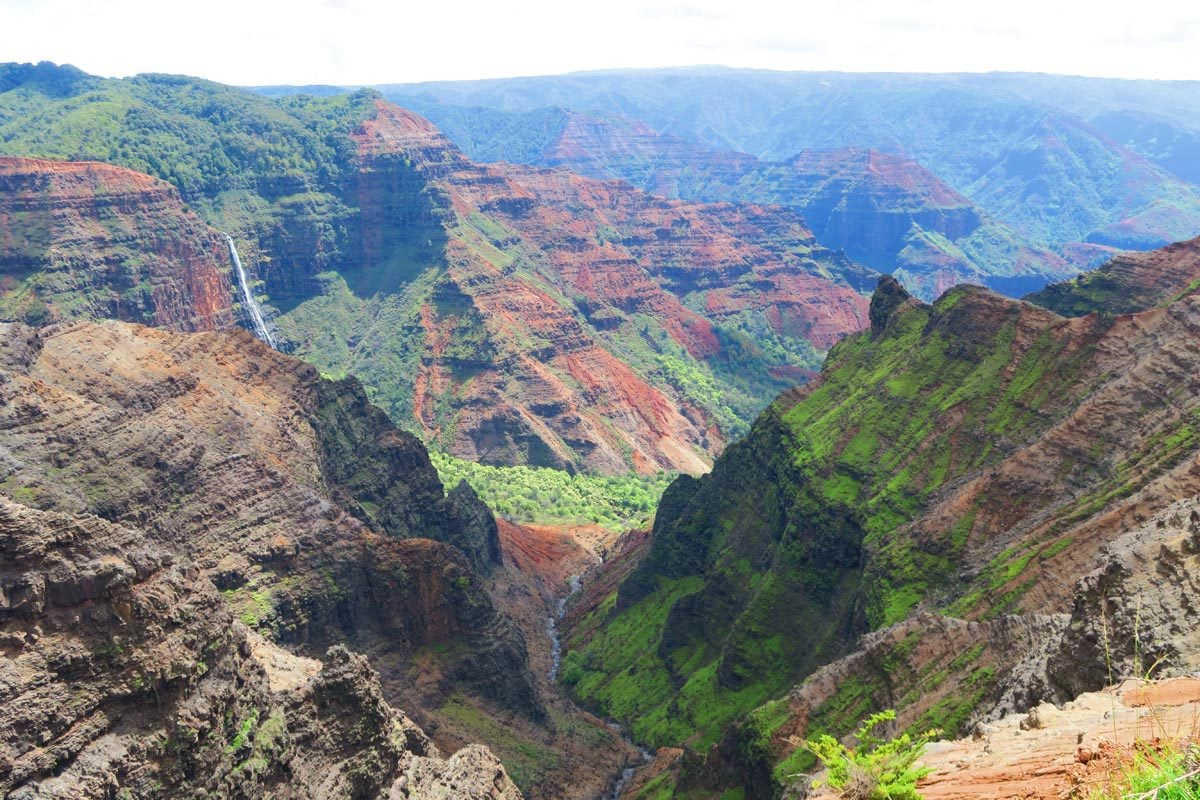
More DIY Hiking & Road Trip options
As you would expect from a U.S. state, the standards for infrastructure are quite high. With the exception of Molokai, the more visited islands in Hawaii boast a wealth of marked hiking trails that you can do on your own. This doesn’t mean no precautions are needed, but it does mean that you don’t need to hire a certified guide who knows the way.
The same is true when it comes to exploring the remote parts of the islands. In Hawaii, if you have a car (especially a 4WD), you can make it to just about anywhere. There will either be signs on the road or places of interest will be clearly marked on a physical or online map. In Tahiti, a lot (but not all) of the hikes should be done with a guide, as the trails are overgrown with vegetation or unmarked. On the driving side, some scenic roads are either not signposted or unpaved (or both), such as the Papenoo Valley in Tahiti.
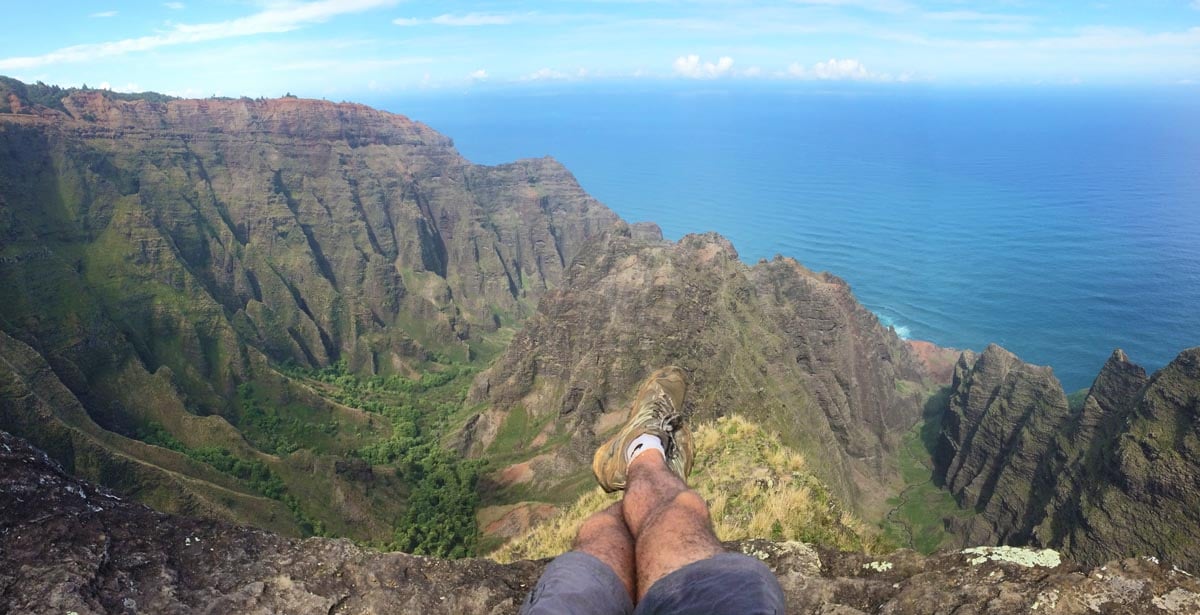
Cheaper Car Rental
Depending on the island and the season (low or high tourist season), renting a car in Hawaii can cost less than $50 per day for an automatic transmission. Since Hawaii is a no-fault state when it comes to auto insurance, you do need to add an extra layer of insurance in some cases, but if you opt out – you have yourself a pretty good deal. In Tahiti, manual transmission prices start at $50-60 per day, but automatic cars are about 30% more expensive and hard to find on some islands. However, it’s important to note that basic car insurance is always included in the price.
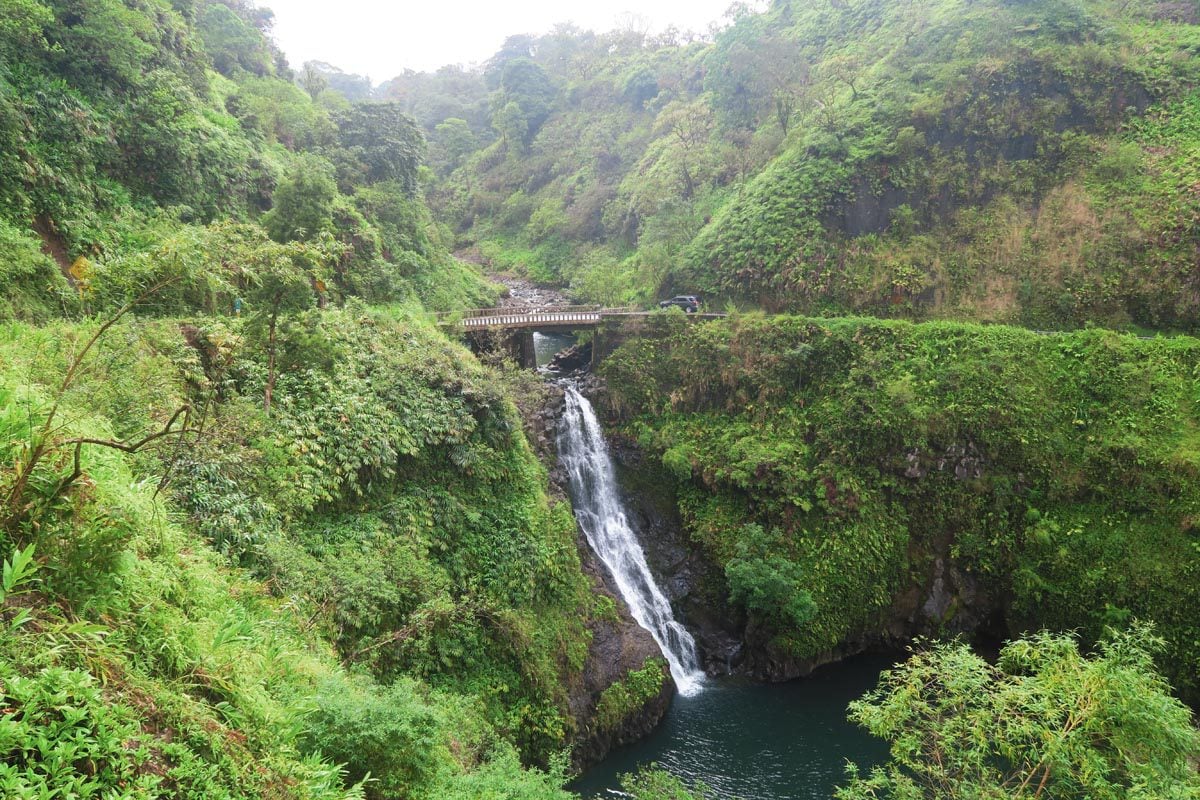
interisland flights are easier
Interisland flights in Hawaii are relatively affordable and almost always plentiful. Multiple airlines compete in the domestic sector, and while none compare with Hawaiian Airlines’ extensive network, they do offer additional choices and somewhat of a competition over market share. In contrast, Air Tahiti was the sole domestic carrier until newcomer Air Moana entered the market. There’s slight competition over some domestic routes, but international flights are more expensive and can quickly fill up, so advanced reservations are needed.
They Speak English!
This is a significant advantage in Hawaii for some travelers, though not a “deal-breaker”. English isn’t that widely spoken in French Polynesia, beyond the most visited islands, such as Tahiti, Moorea, and Bora Bora. It might be challenging to converse in English in some of the off-the-beaten-track islands or the further you get from the resort scene. A little French will come in handy, but sign language or Google Translate should also do the trick.
Hawaii is better for Camping
For those who enjoy camping beneath the stars, you’ll be happy to know that every island in Hawaii has organized campsites. As on the mainland, reservations are often required, and space is very hard to come by, but the campgrounds are well-maintained and serviced by professionals. In Tahiti, there aren’t any official campsites, though there are private sites on many islands where you can pitch a tent.
it’s easy to see Sea Turtles in Hawaii
Nearly every island in Hawaii has a beach where you’re pretty much guaranteed to spot green sea turtles baking in the sun. This is especially true on the Big Island, Maui, and Kauai. This isn’t the case in the Tahiti islands, and your best shot of spotting sea turtles is underwater.
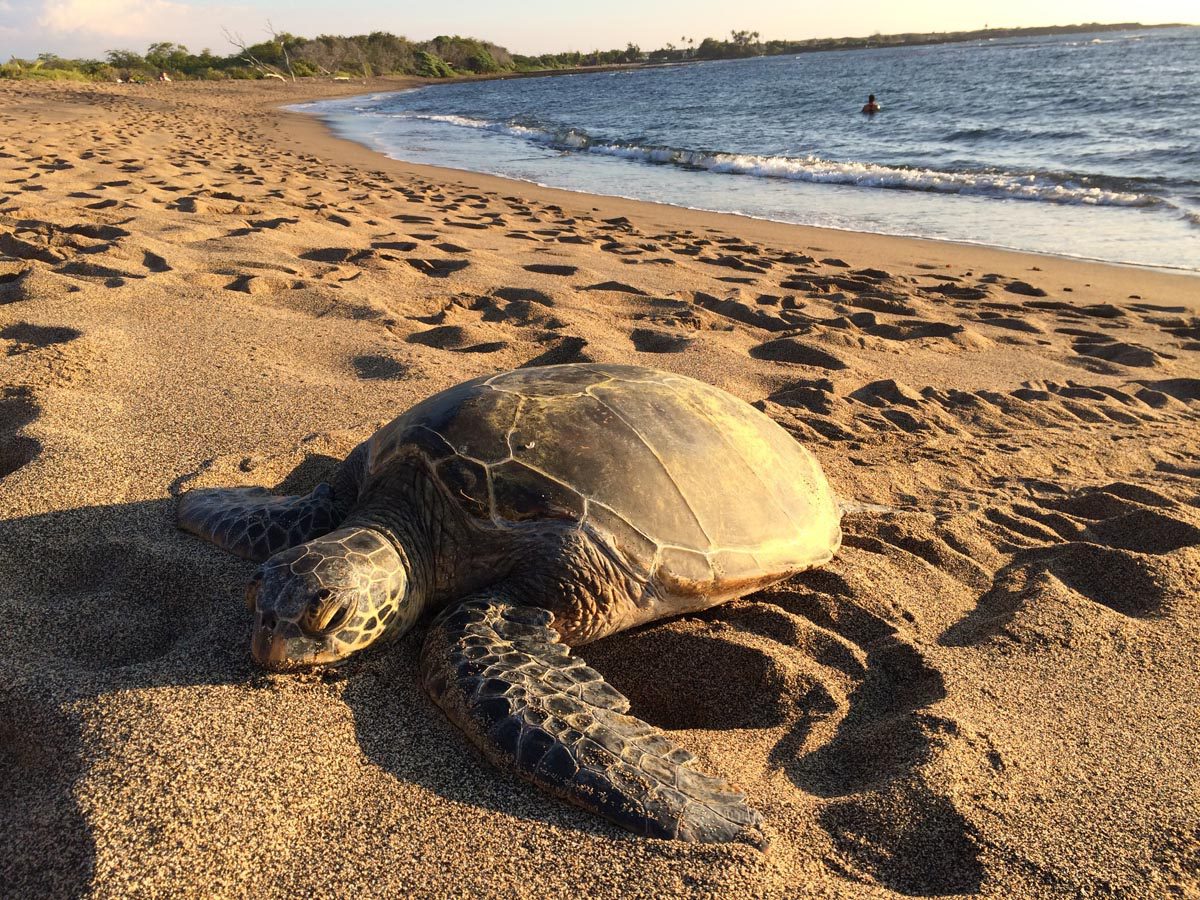
Family holidays are easier in Hawaii
Apart from the reduced flight time to Hawaii vs. Tahiti, Hawaii’s resorts, towns, and service providers offer plenty of ways of keeping the kids busy. French Polynesia does welcome many families, but there are fewer ways to thrill children unless they appreciate nature. The focus in Tahiti is more on the outdoors and relaxation rather than on action-packed adventure and manmade attractions. Moreover, there aren’t many (if any) activities on some islands in French Polynesia during rainy days.
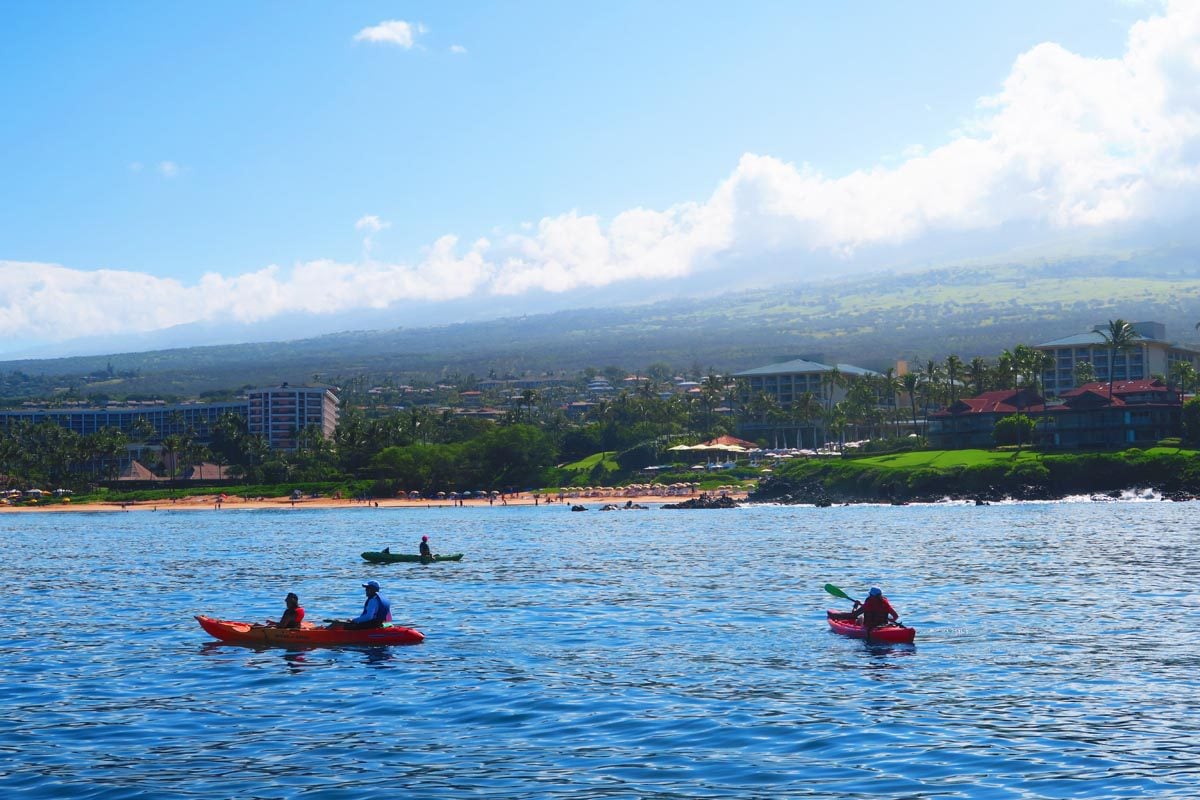
there’s Nightlife in Hawaii
In Hawaii, there’s always something to do at night on every island. This ranges from luau shows to local bars, cocktail lounges, beach bars, and even nightclubs in Honolulu. In French Polynesia, Tahiti is the only island with “proper” nightlife, specifically in Papeete – the capital city. There are a few low-key nightlife options in Moorea, Raiatea, and Huahine, but that’s about it.
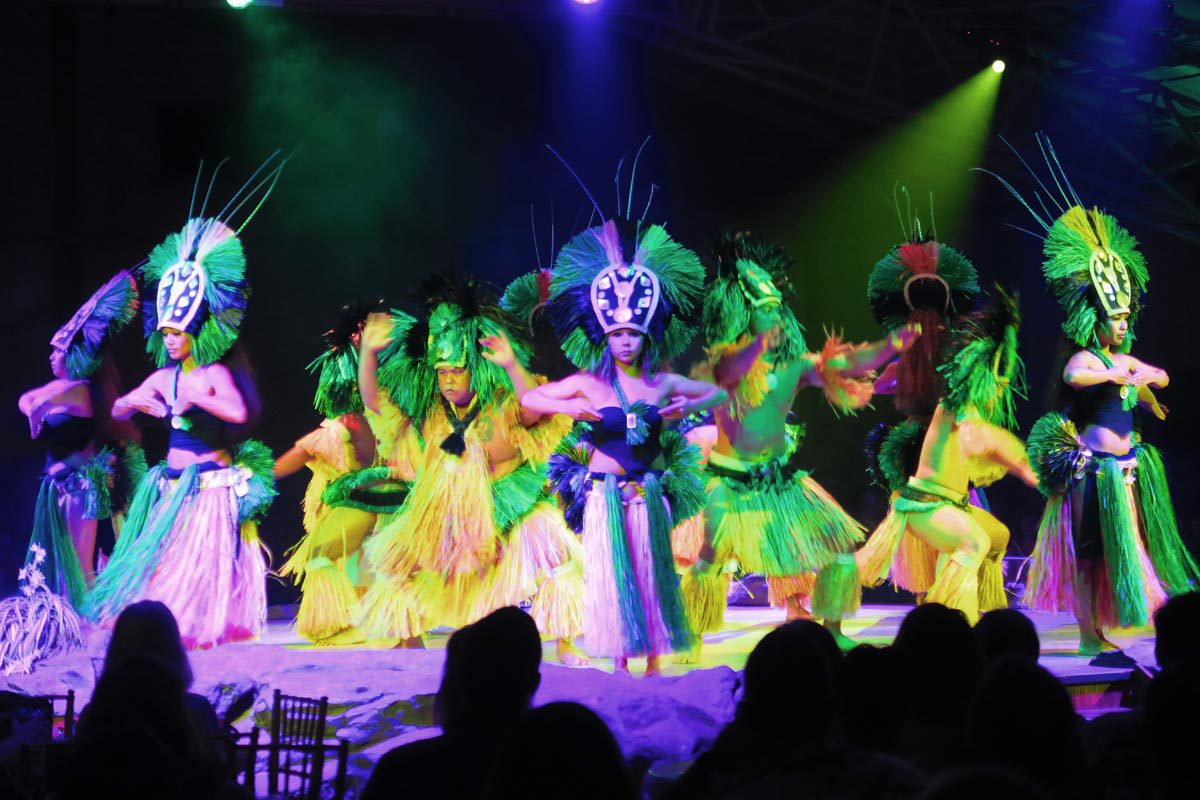
better supermarket variety
In case you forgot you’re in America, Walmart, Costco, and Target have also made it to Hawaii. Every island in Hawaii has these large chains, including supermarket giants Safeway and Foodland. If you like to stock up the fridge in your self-catering unit, it’s a pretty easy task in Hawaii. In French Polynesia, there are proper supermarkets only in Tahiti and Moorea, and most grocery shopping is done in small shops or mini-markets.
Poke Bowls
I’m unsure why this delicious dish hasn’t made its way south to Tahiti. Poke is essentially marinated chunks of raw tuna that come in various flavors. The best part is that you can make a meal out of it by adding seasoned rice and a side salad (seaweed is the best). This is called a poke bowl. You’ll find poke everywhere in Hawaii, but the best value for money poke is surprisingly at supermarkets. In Tahiti, they have a similar dish called poisson cru (literally meaning raw fish). It’s comprised of chunks of raw tuna marinated in coconut milk and tossed with vegetables and lime.
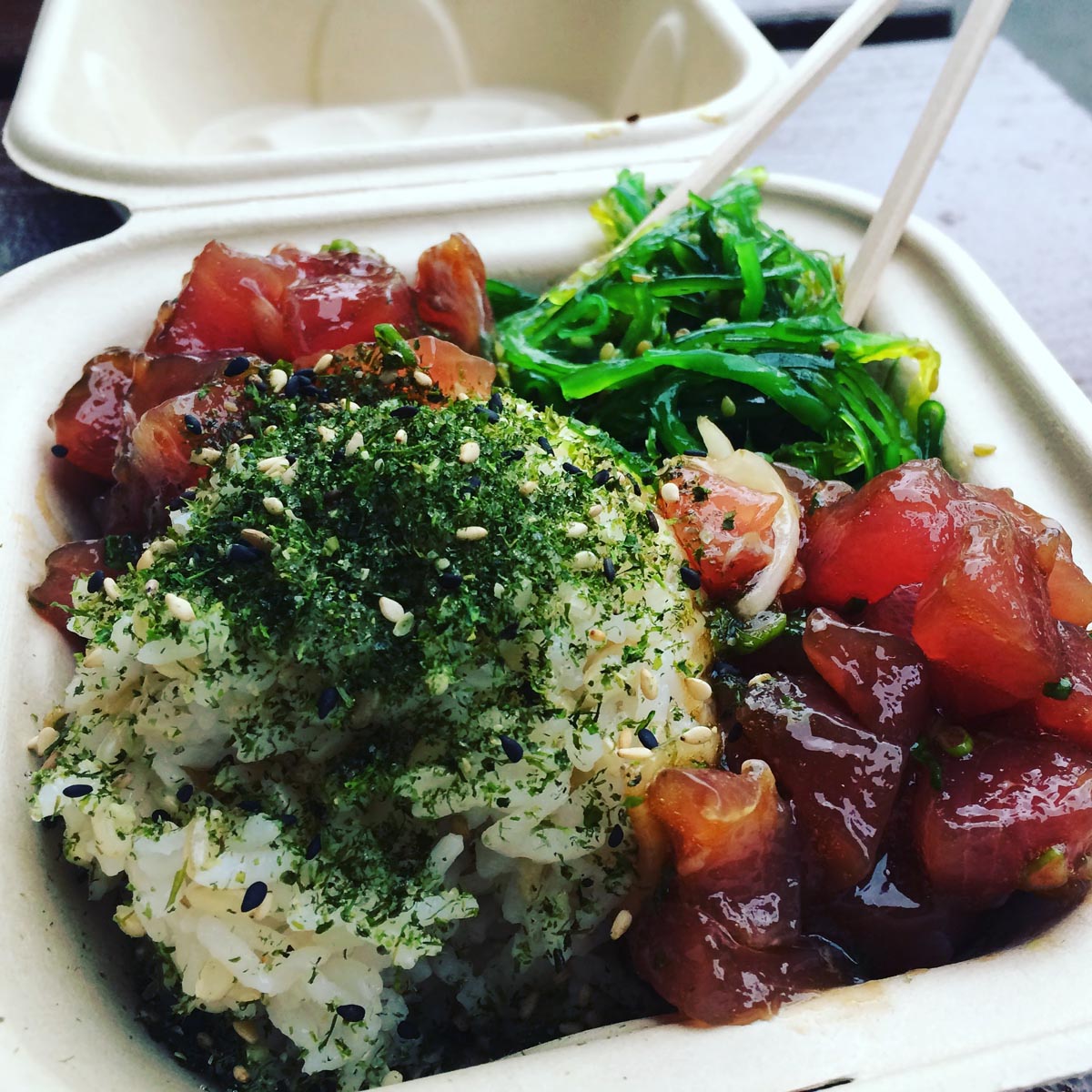
Hawaii has more Surfing optios
Though Tahiti’s waves are legendary, access to prime surfing spots often requires paddling outside the lagoon or using motorized help (Papenoo is an exception). Moreover, surfers risk crashing on the coral reef and injuring themselves. Since Hawaii’s islands are not protected by a coral reef, catching big waves is a lot easier.
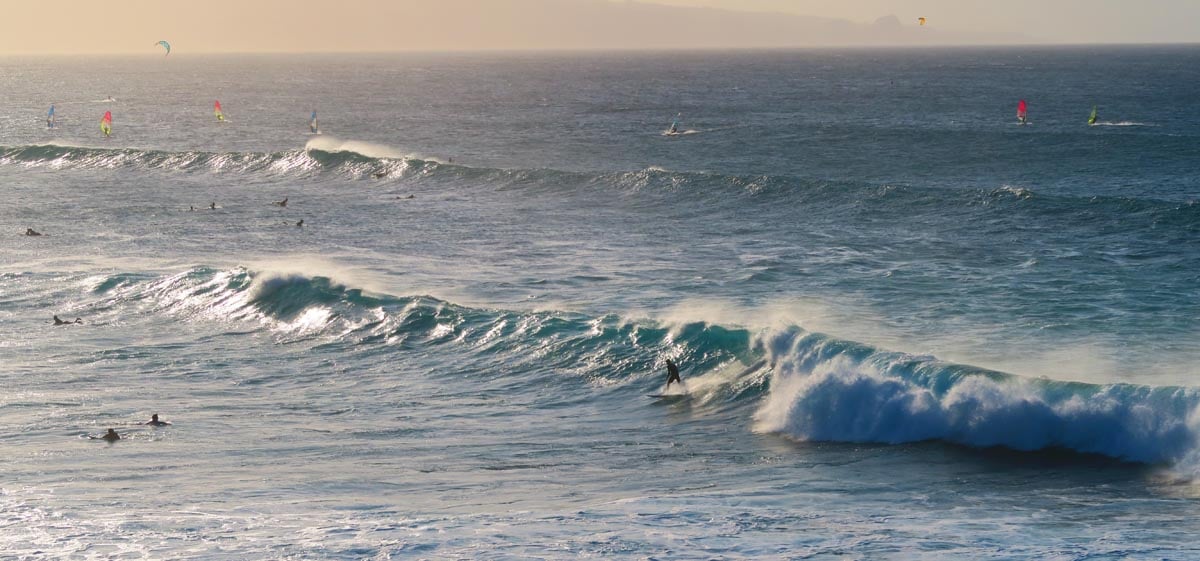
The Best Islands In Tahiti
Watch this video countdown of the top islands in Tahiti (French Polynesia). You might need to disable your ad blocker.
why choose Tahiti over Hawaii?
Here are some of the main advantages of Tahiti’s islands over Hawaii.
it’s got a tiny Population
French Polynesia’s total population is roughly 285,000, with over 60% concentrated on the main island of Tahiti. Compare that with Hawaii’s 1.4 million (and growing) population, one million of whom live in Oahu, and you get the point. You don’t have to be a mathematician to understand where I’m going with this… There’s more space for everyone in French Polynesia, including visitors!
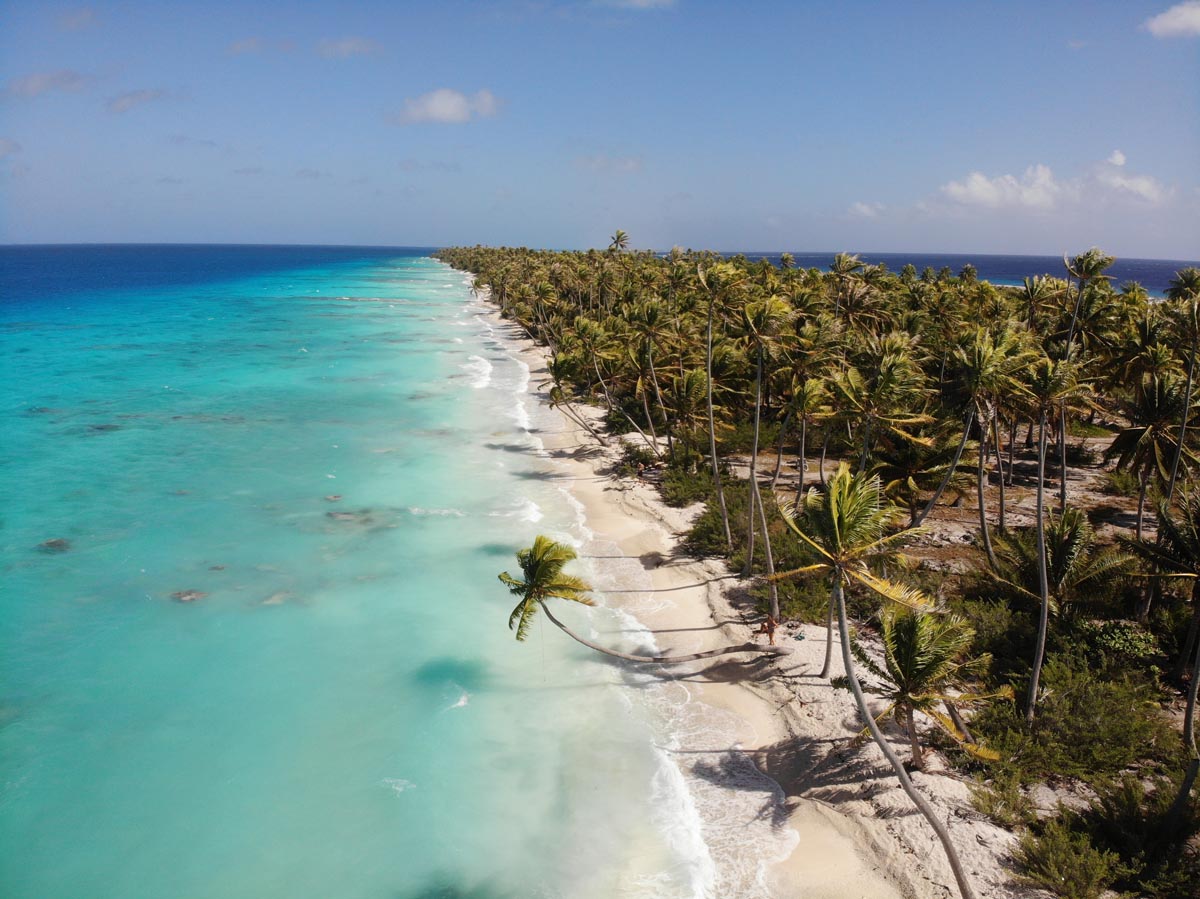
Tahiti receives (Much) Fewer Tourists than Hawaii
It is said that Hawaii gets the same number of visitors throughout a single weekend as French Polynesia sees over an entire year! In 2022, about 9.2 million tourists visited Hawaii, with an average of 25,000 visitors on any given day. In comparison, the French Polynesia territory received only 219,000 visitors in 2022. Once again, you don’t have to be a genius to get the point. If you want a slice of paradise to call your own, there’s no debate – French Polynesia easily trumps Hawaii.
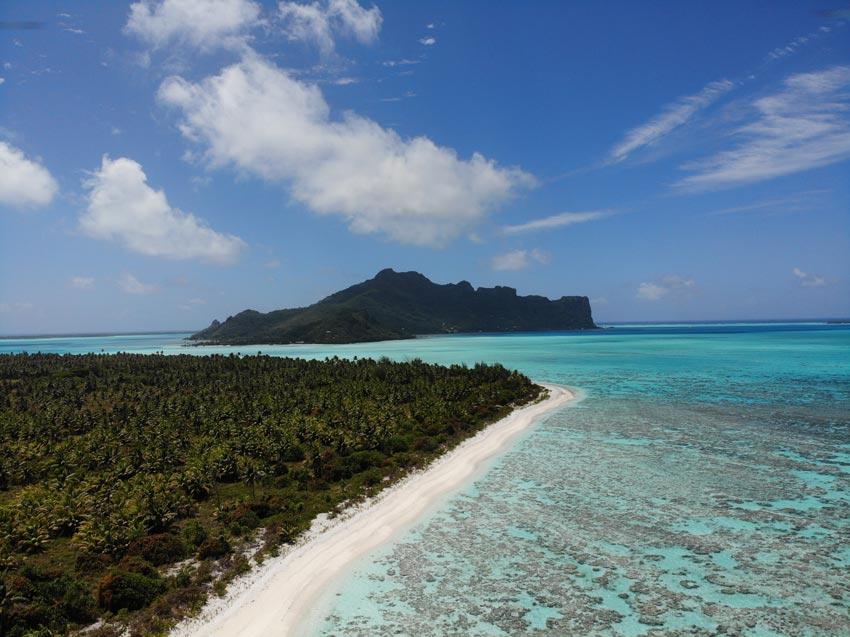
Tourists Are Welcome!
The increasing negative sentiment towards tourists is turning off some Hawaii-bound travelers. However, there’s very little chance you’ll feel unwelcome as a visitor in French Polynesia. As long as you respect the local way of life and aren’t pushy or trying to rush a local service provider, you’ll see that the smiles on the faces of locals are 100% authentic.
Air Passes & Ferries
Air Tahiti makes it more affordable to include multiple stops on your island hopping journey in Tahiti with their multiple air passes. I’m confident Air Moana will follow suit soon and offer air passes as well. Moreover, you can easily get between Tahiti and Moorea using two ferry lines, and hop to the Leeward Islands using the Apetahi Express. In Hawaii, it’s pretty much down to domestic flights to get between the islands.
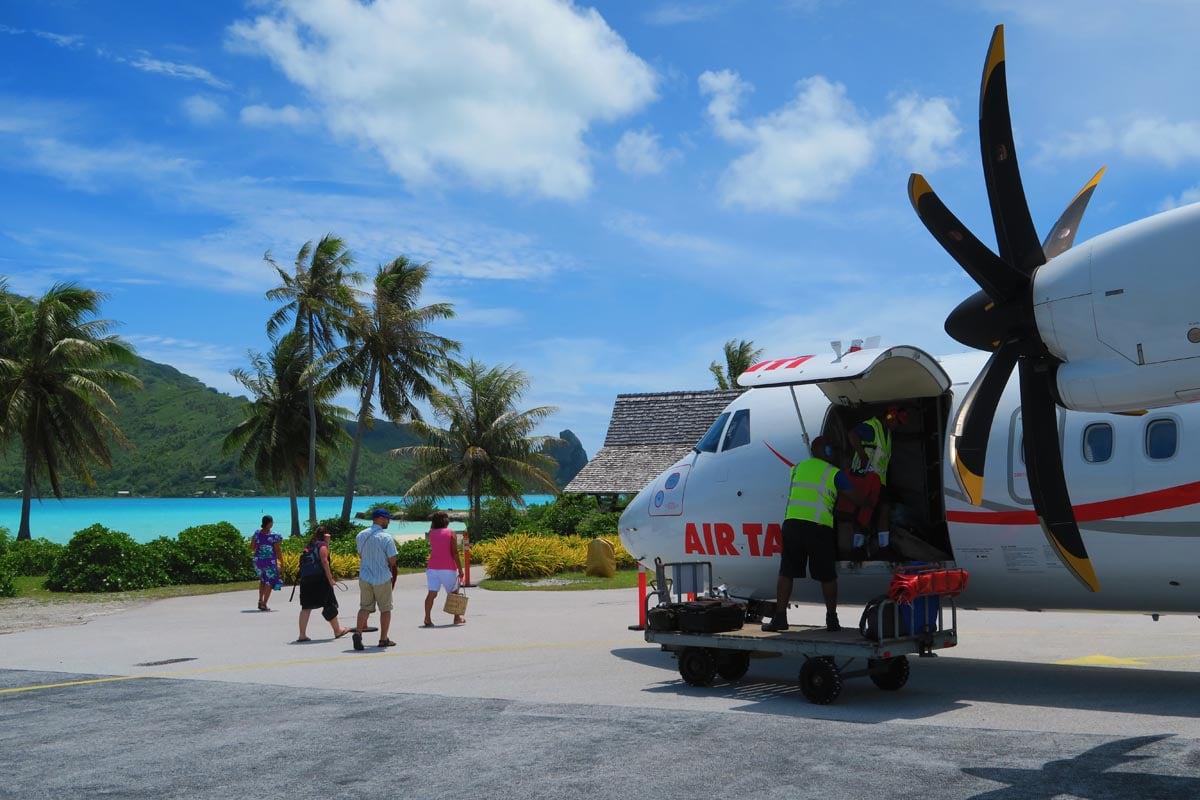
Accommodations and food are cheaper in Tahiti
Putting aside the five-star overwater bungalows that wrongly define French Polynesia, visitors to the islands can find affordable accommodations, certainly when compared to Hawaii’s outrageous prices and even more so when you look at a world map and see where you’re heading. The best accommodation type for the independent traveler is the “pension”. These family-owned sort-of-lodges can be very simple or quite fancy and will include the option of breakfast plus dinner in the price – a great way to taste the delicious local cuisine.
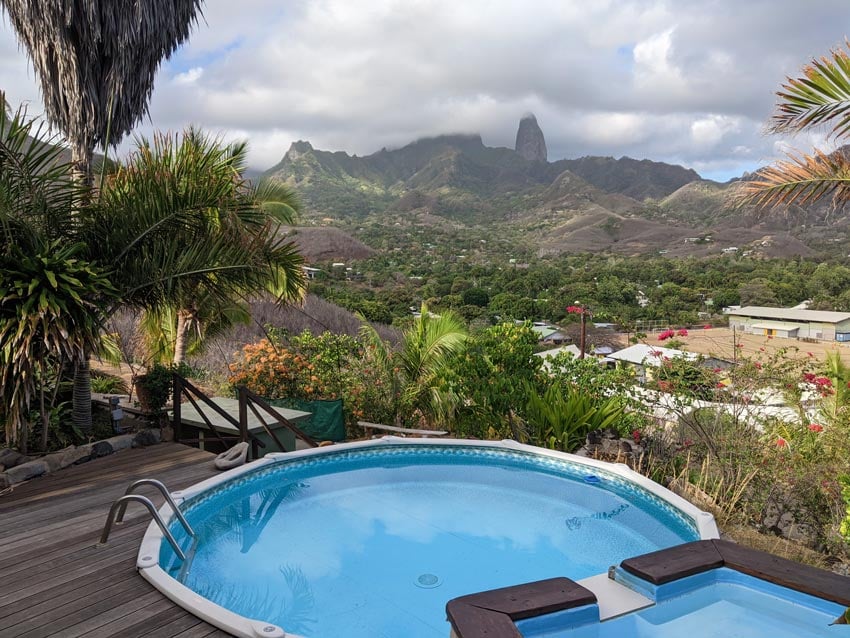
In the food department, I was shocked when charged $8 for a coconut in Hawaii! I found those “authentic” farmers’ markets in Hawaii to be (for the most part) totally fake, not to mention way overpriced. Moreover, how on Earth is it possible that an imported banana from South America costs less than a locally grown one in Kauai? In Tahiti, you might have fewer options, but you can always find a simple meal for under $15, and local produce will always be relatively cheap. The best is to buy fruit from roadside stalls, sandwiches (casse-croûte) for lunch, and dine in evening roulottes (food trucks).
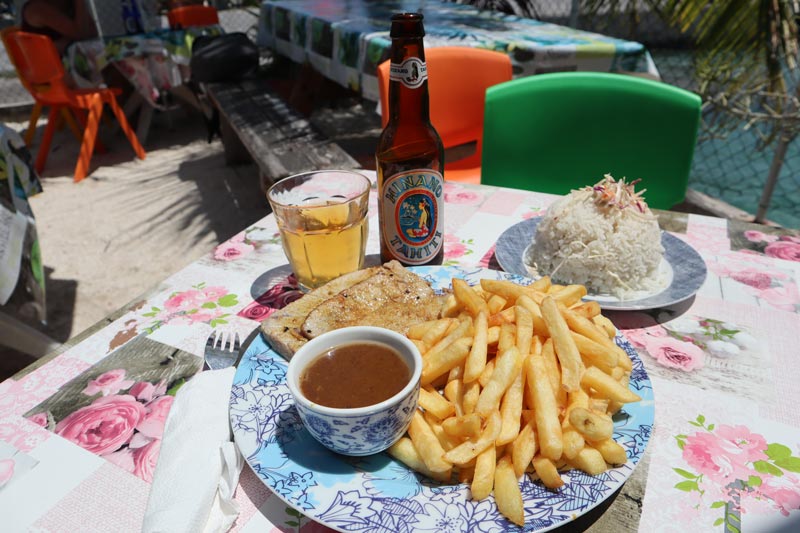
Tahiti is much more authentic than hawaii
Here’s another demographic statistic for you. In Hawaii, only 10% of the population is native Hawaiian and 23% are of mixed race – a.k.a “hapa”. About 60% of Tahiti’s population is native Polynesian, and about 7% are mixed race. What this means for the visitor to the islands of Tahiti is that you actually meet Tahitians! You don’t have to attend a touristy luau show to see a real Polynesian. Sure, French influence has considerably changed Tahitians over the years, but it is nowhere as severe as what happened in Hawaii. It isn’t uncommon to hear Tahitians speaking Tahitian amongst themselves or to notice the “small things” like the unique island fashions, the physical and emotional gestures, and exotic beauty.
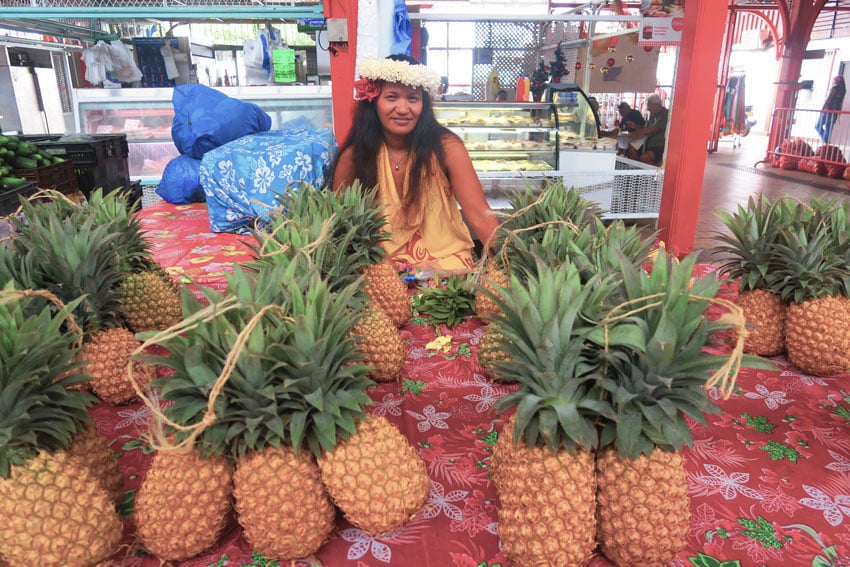
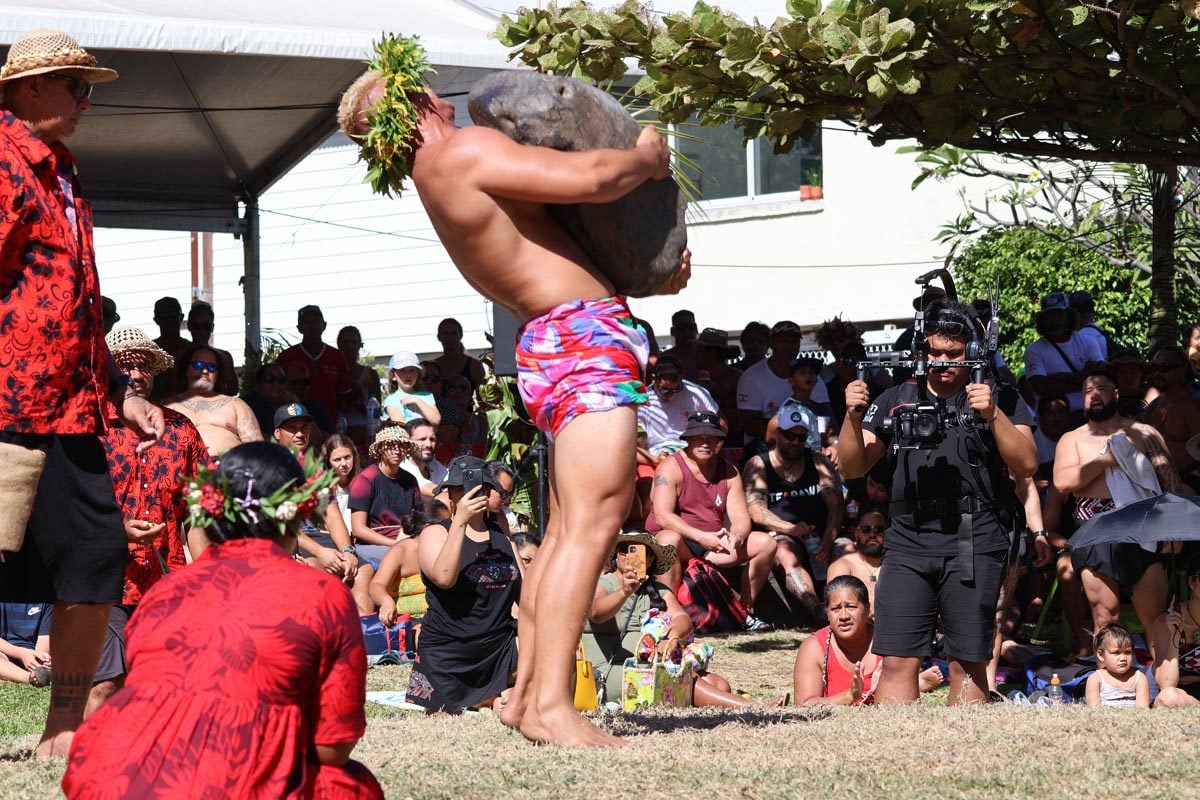
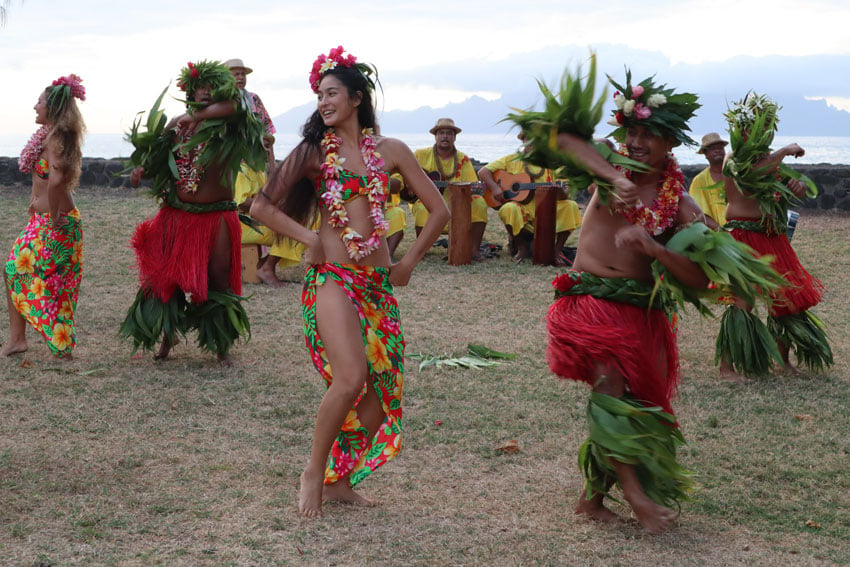
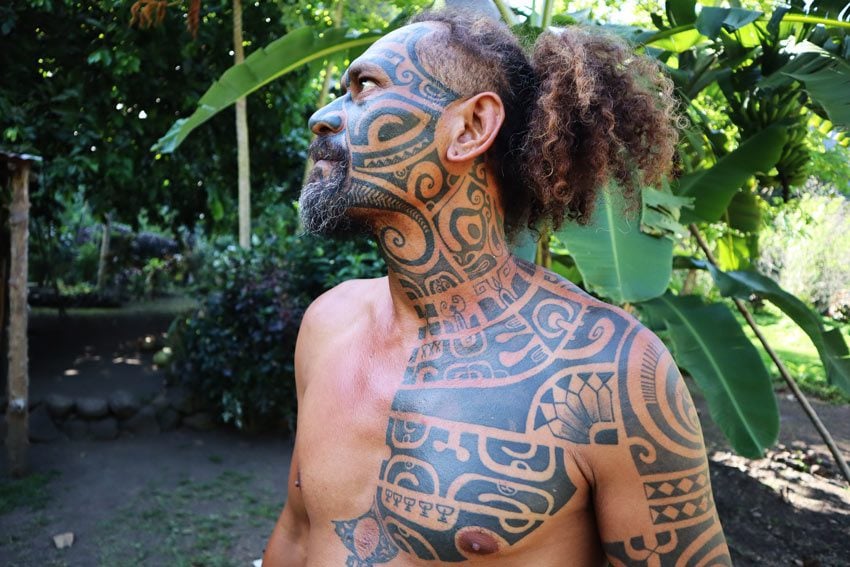
The Locals are Friendly
On the islands of Tahiti, locals often go out of their way to welcome tourists. They are truly happy to meet you and are passionate about sharing their way of life in paradise (only in Bora Bora can locals be slightly less inviting). It’s not only all about the tourism dollars, which are undoubtedly vital to the local economy.
Tahitians are genuinely kind and eager to converse with you if you just make a small effort. In Hawaii, it’s difficult to find “real locals,” and when you do, they are not always that friendly. Some truly resent the transformation of their islands and culture under American statehood, and it isn’t uncommon to see the flag of the Kingdom of Hawaii (i.e. ‘separatists’ flag) hanging outside of homes and on (American-made) pickup trucks.
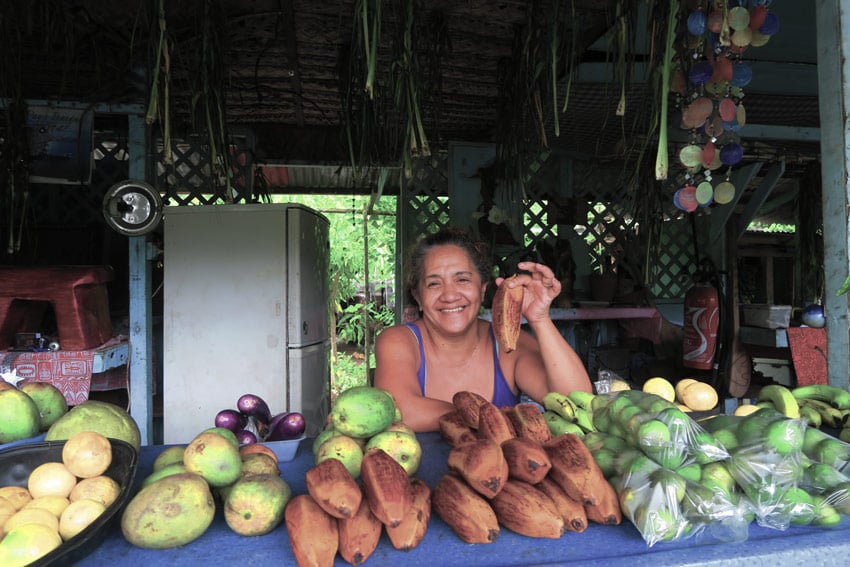
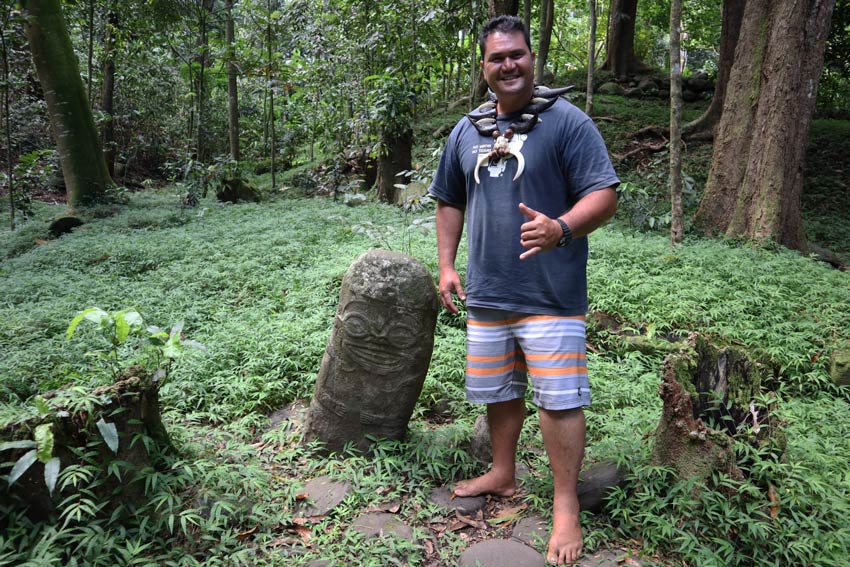
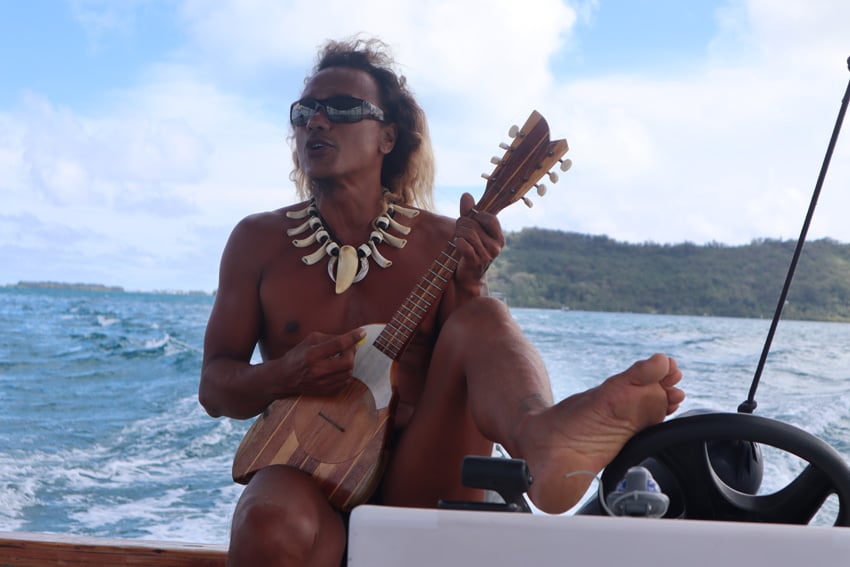
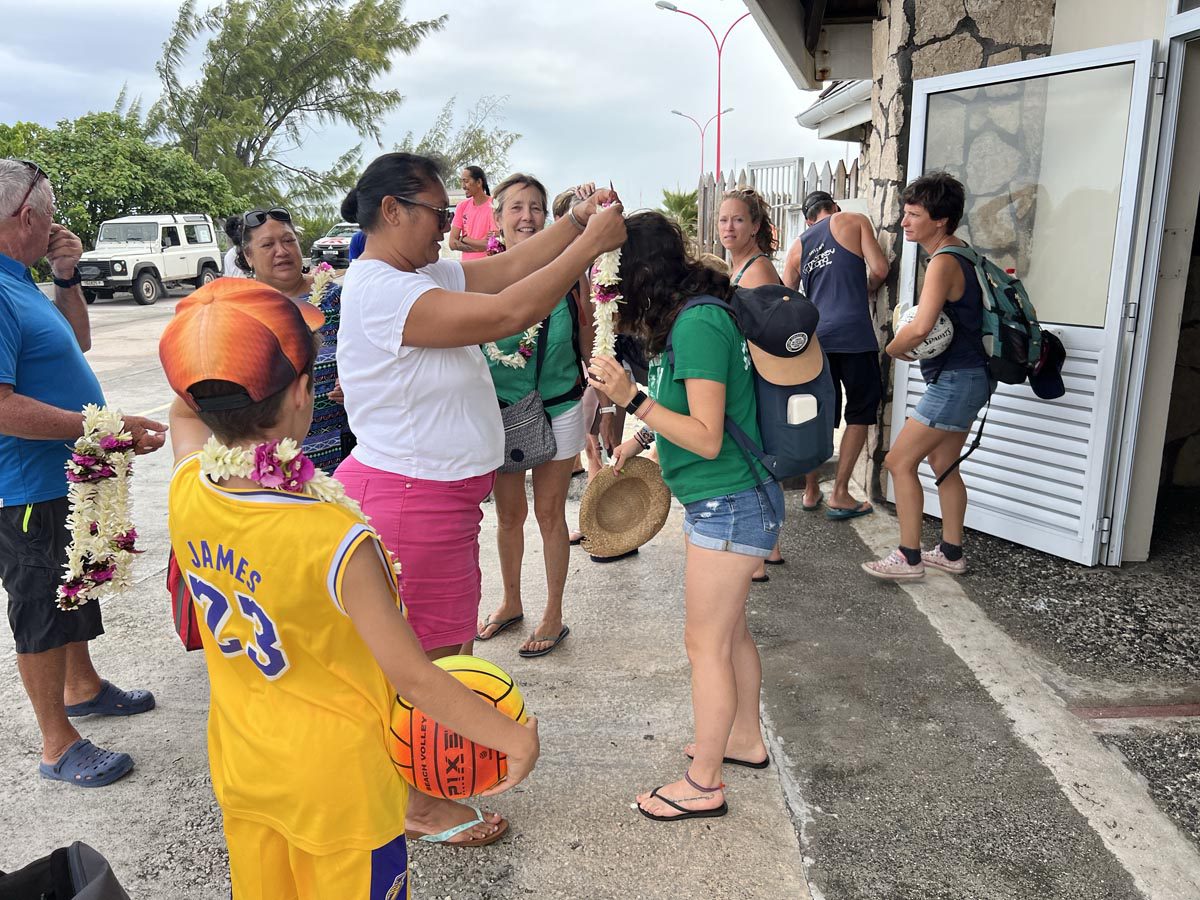
there are no Large retail Chains in Tahiti
Except for “metropolitan” Papeete, you will not find any familiar international (or French) chains in the islands of Tahiti. It’s all about small, usually family-owned businesses that remind you of what your shopping experience used to look like when you were a child. Though you can expect Western standards (more or less), things haven’t really changed that much over the years in French Polynesia and it’s all very beautiful to experience.
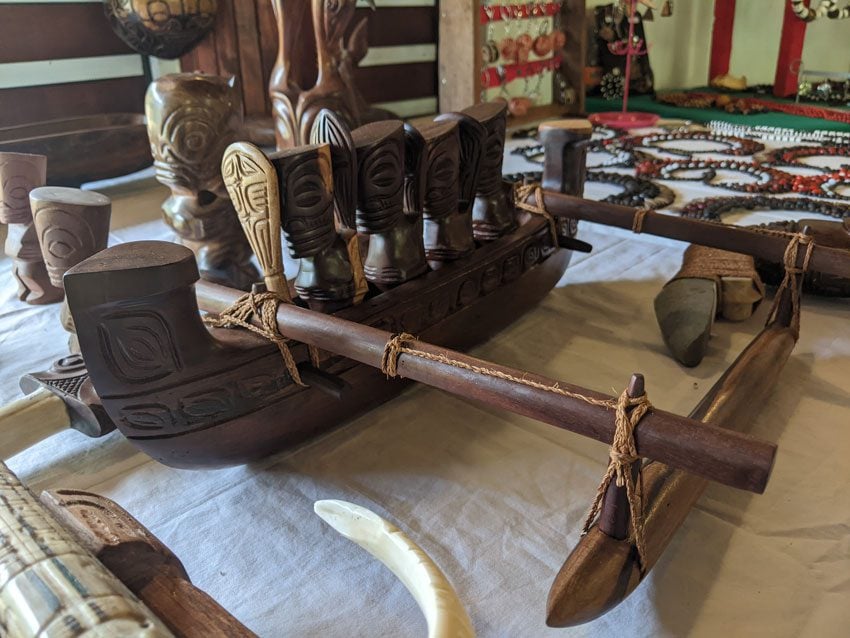
the islands are Stereotypically Tropical
The islands of Tahiti are your stereotypical paradise. The images you see in travel magazines, computer screensavers, and desktop backgrounds – were probably all shot somewhere in this region of the South Pacific. In fact, the islands themselves are a lot prettier when you see them with your own eyes, and their pristine nature can often be all yours in the absence of mass tourism.
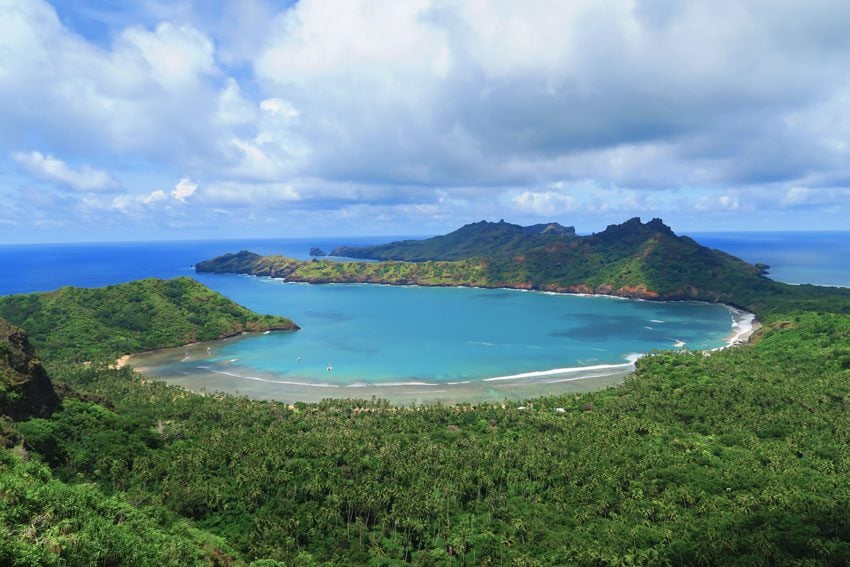
That’s when your other senses join the party, amplifying the feeling of paradise. I’m talking about the smell of the sea salt mixing with humid air, the heavenly scent of flowers blooming everywhere, the fruit hanging from the trees, and fresh tuna tossed on the grill – to name just a few. Oh, and the locals… so exotic-looking and beautiful – a true feeling of visiting a parallel universe, nothing you’ve ever seen!
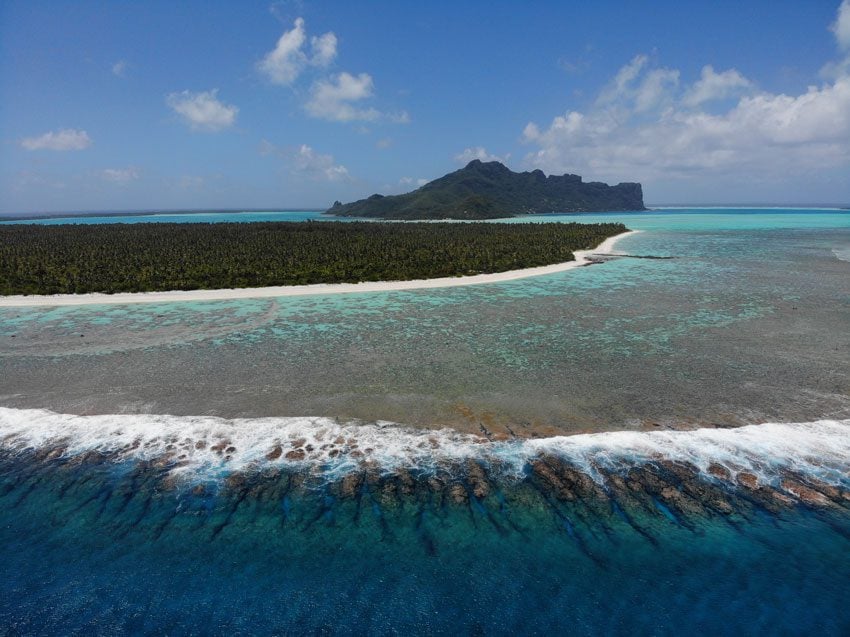
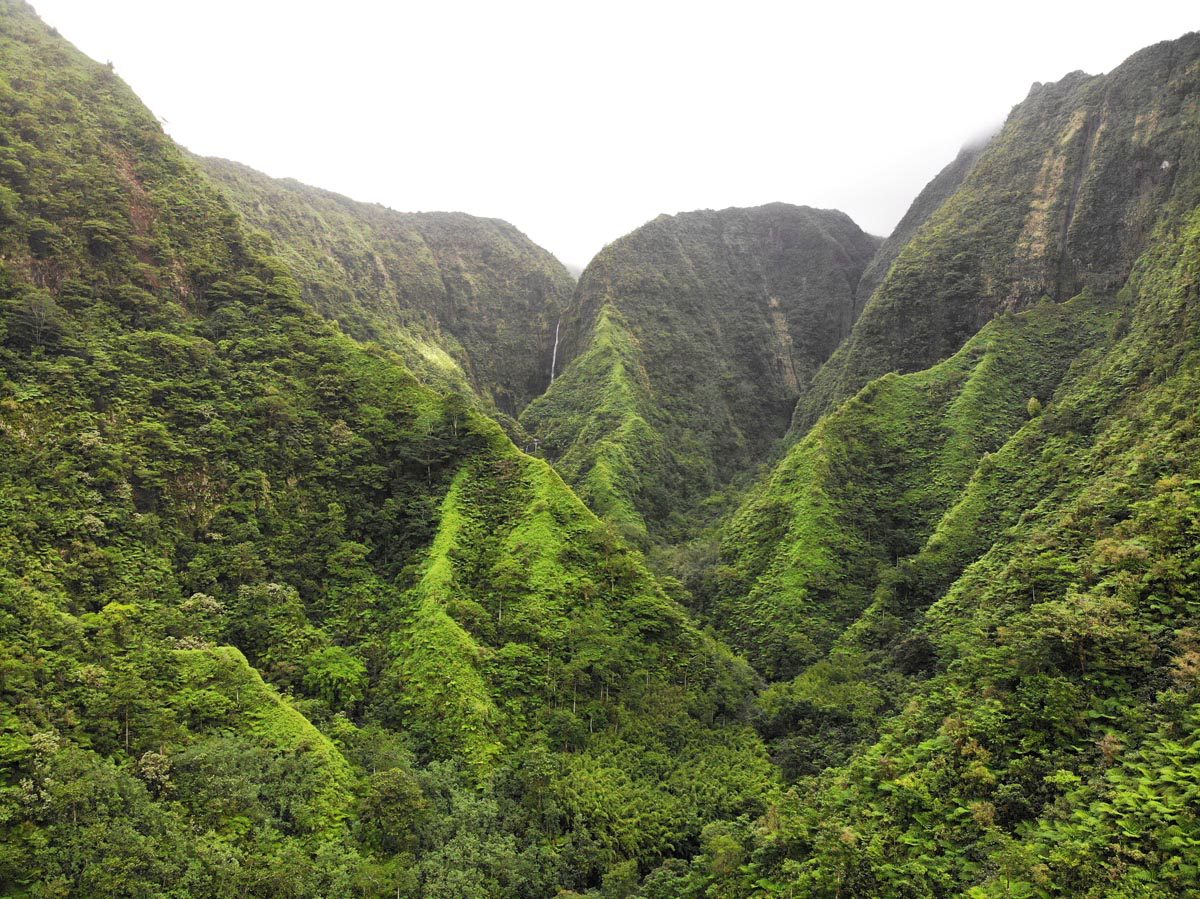
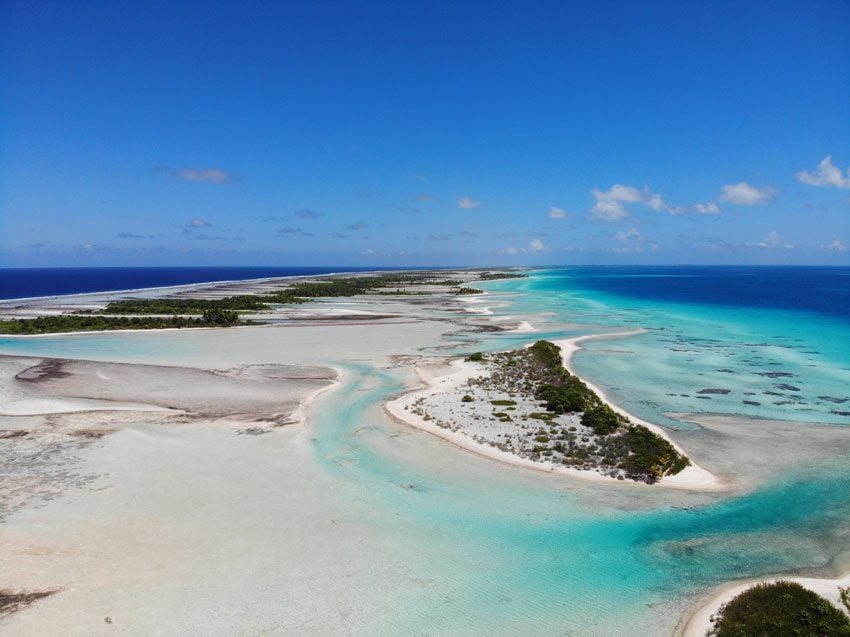
the Diversity of Islands
The islands of Tahiti are comprised of 118 unique islands and atolls (65 of which are inhabited) spread across a vast distance of the South Pacific, roughly the size of Europe! These islands are divided into five distinct archipelagos, allowing visitors to travel to entirely different worlds in one voyage.
In the Society Islands, high volcanic islands rise out of the ocean, each protected by a coral reef. In the Tuamotus, the largest chain of coral atolls in the world are all that remains once the islands sank to the ocean’s depth. And in the distant Marquesas Islands, Mother Nature has been free to sculpt her finest work on these wild high islands not protected by a coral reef. In the southern Austral Islands, fertile islands are dotted with eerie limestone caves. The biggest question when planning a trip to French Polynesia is which islands to visit.
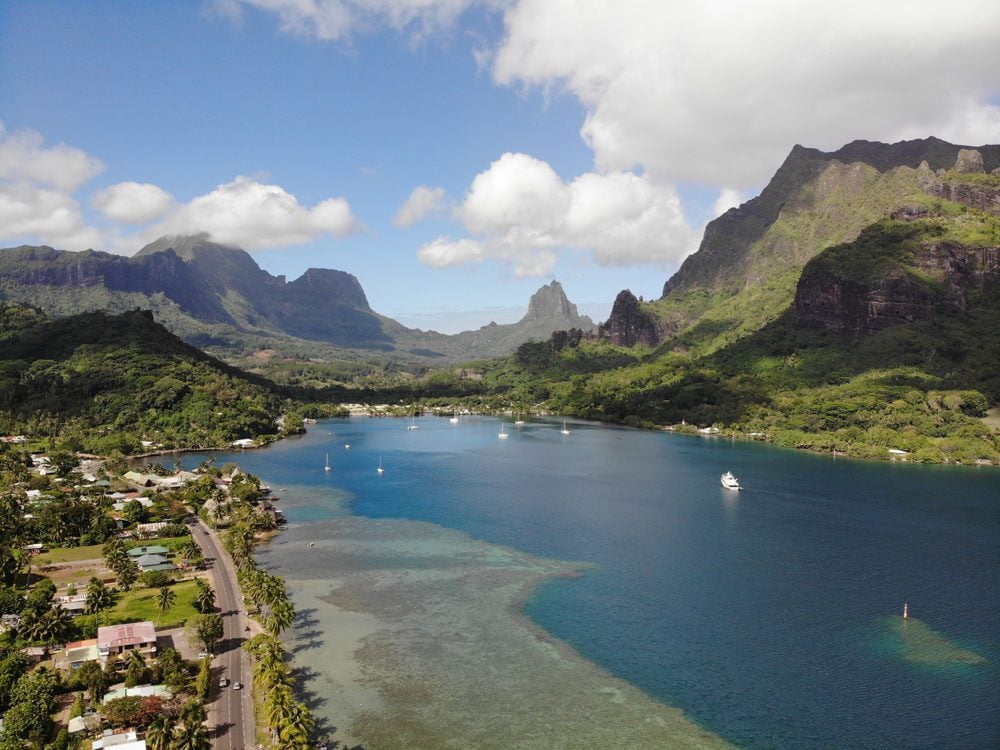
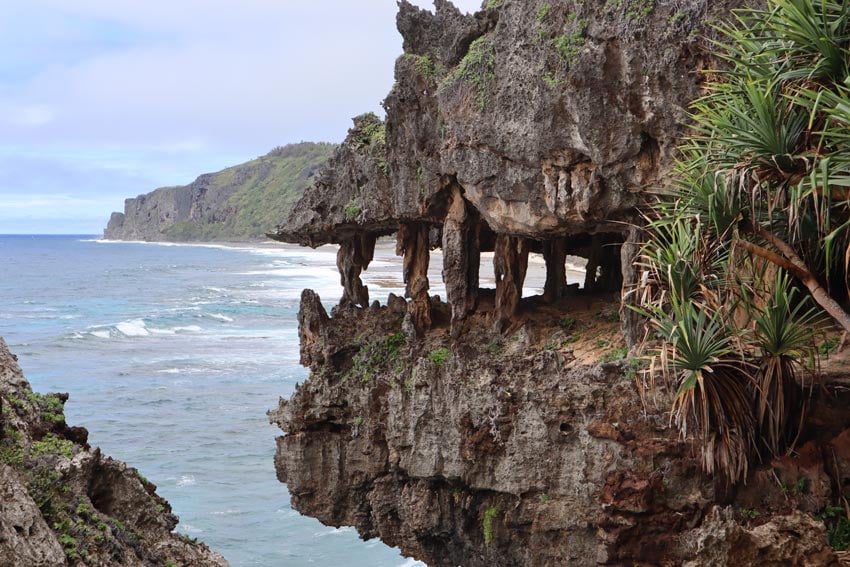
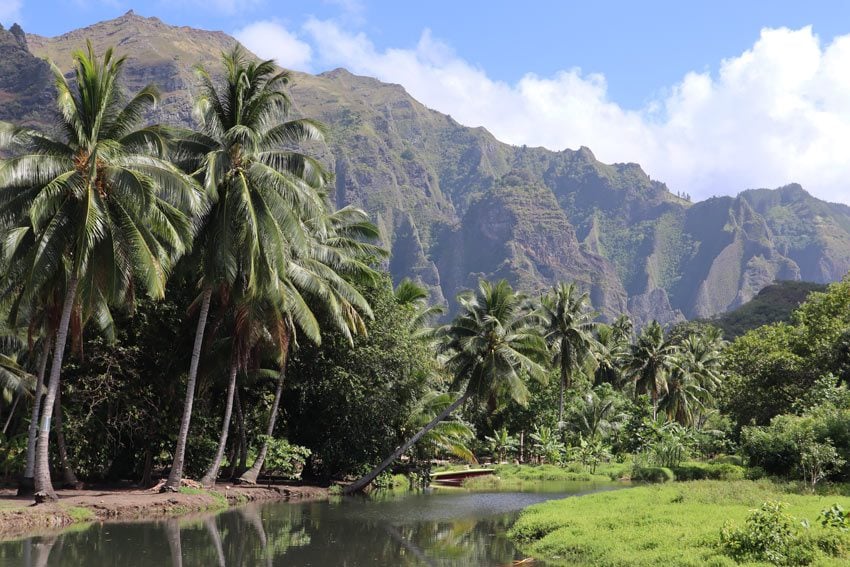
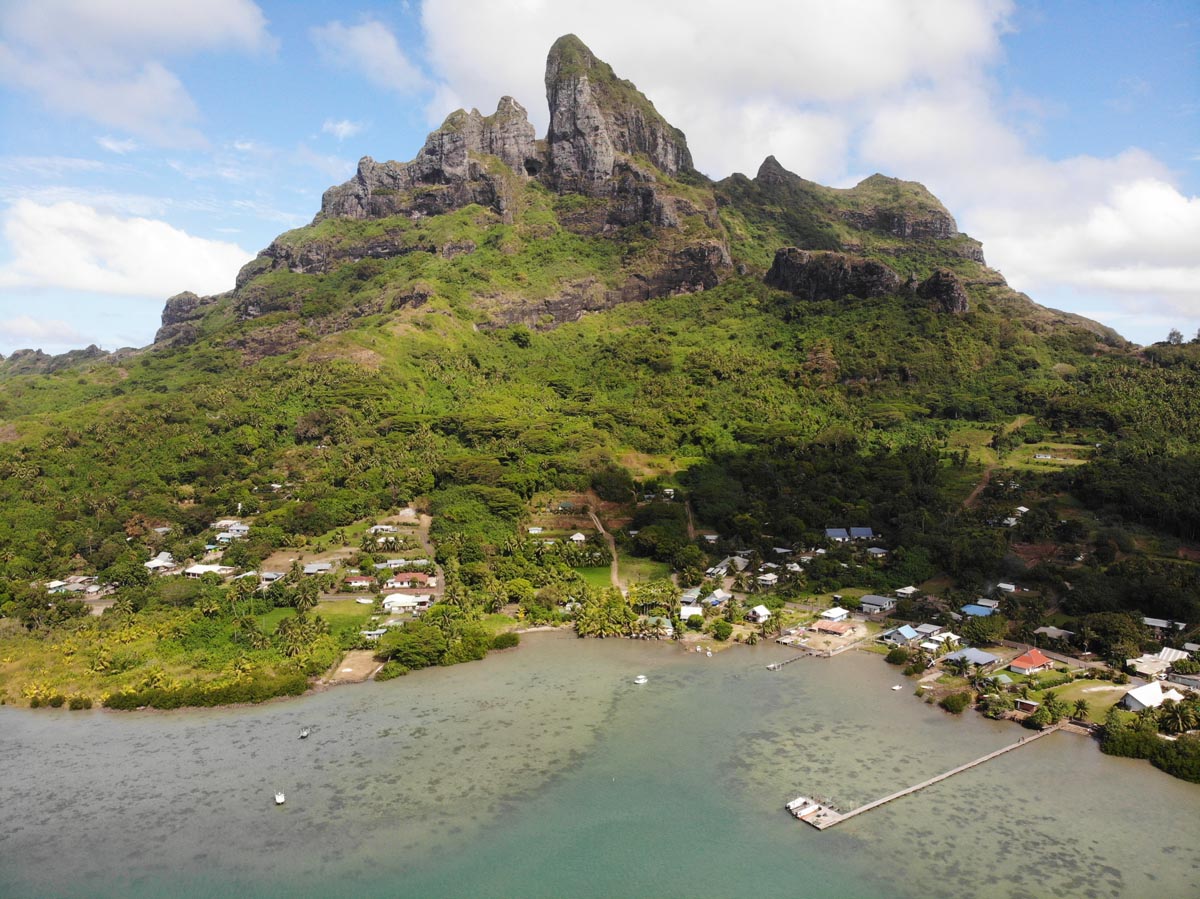
many islands are surrounded by Lagoons
Don’t discount the importance of the next few lines. The lagoons found on most of the islands in French Polynesia make all the difference. In essence, they create enormous “salty swimming pools” and protect the island from the violent forces of the ocean. They are why overwater bungalows can be built, why the color of the water is out of this world, why you can snorkel just about anywhere, and why you can spend a few hours staring at the horizon and watching life go by. In contrast, the Hawaiian Islands have no protective reef. This means the swimming is rough, the beaches aren’t as perfect, the snorkeling kind of sucks, and no overwater bungalows.
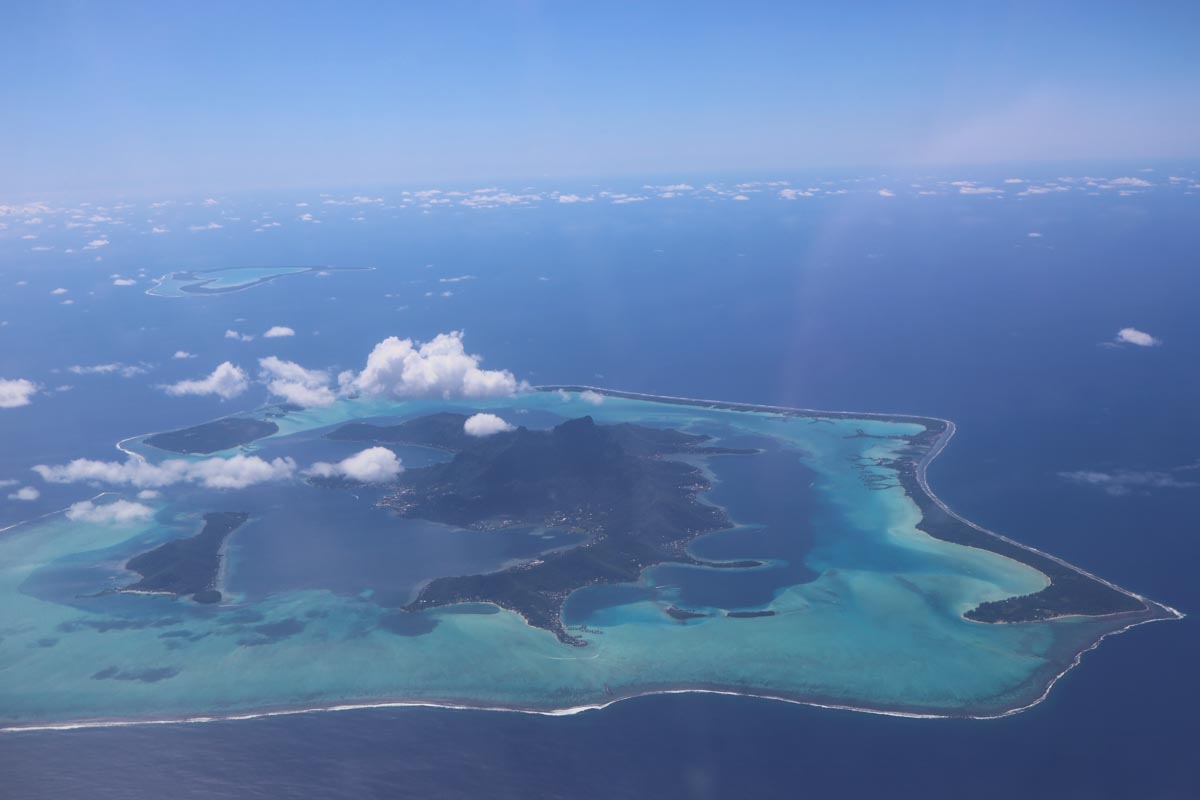
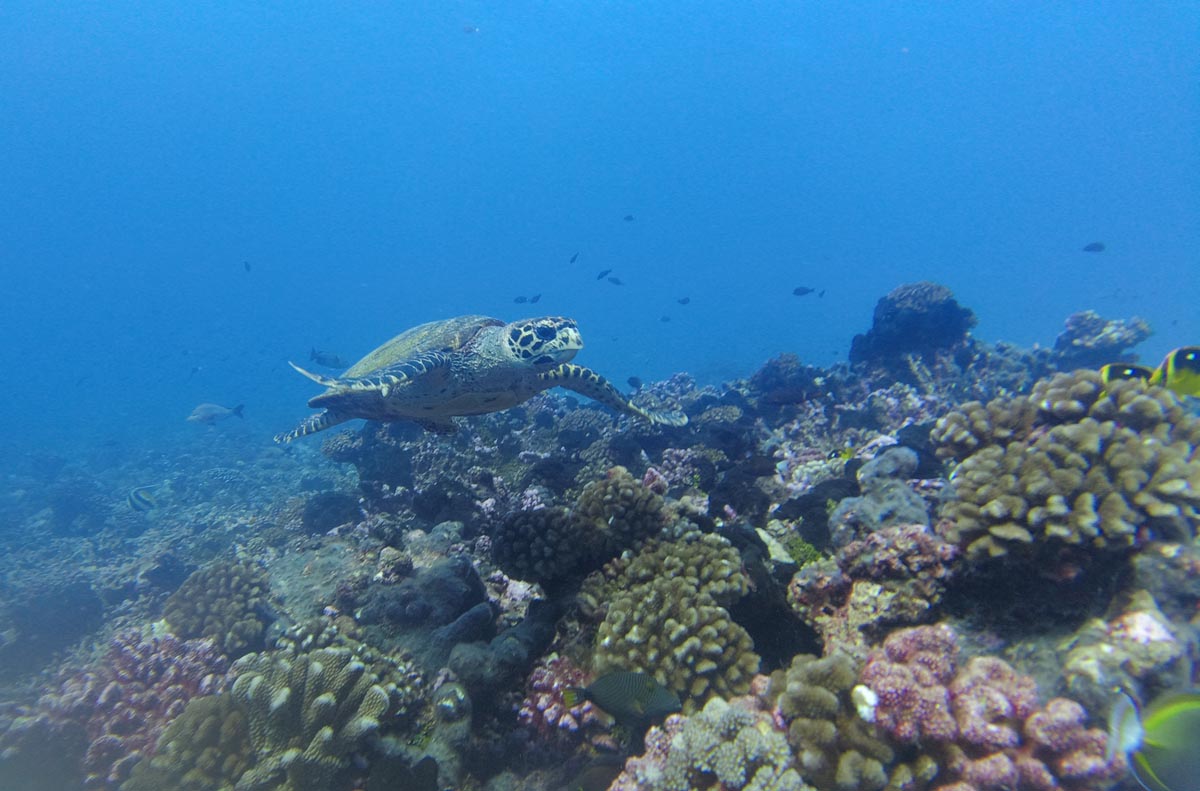
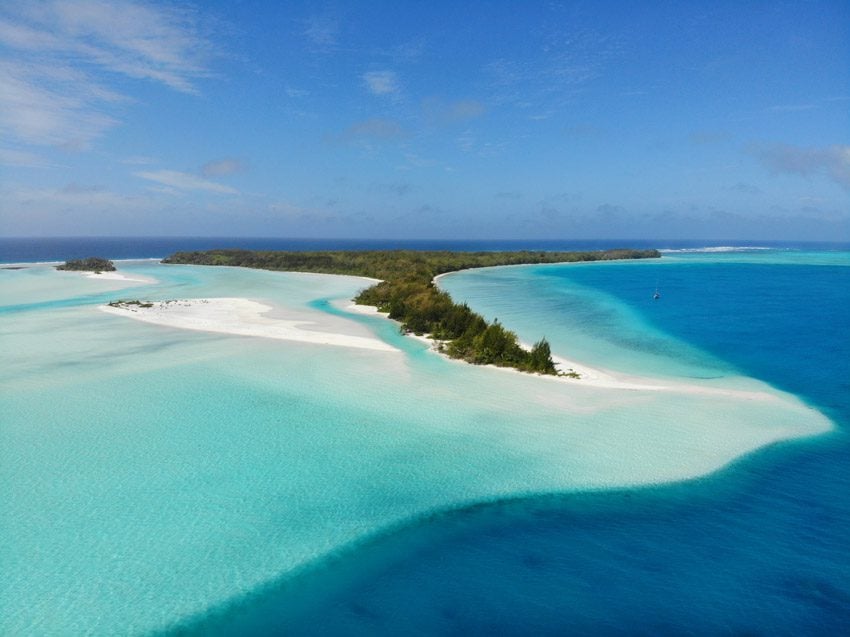
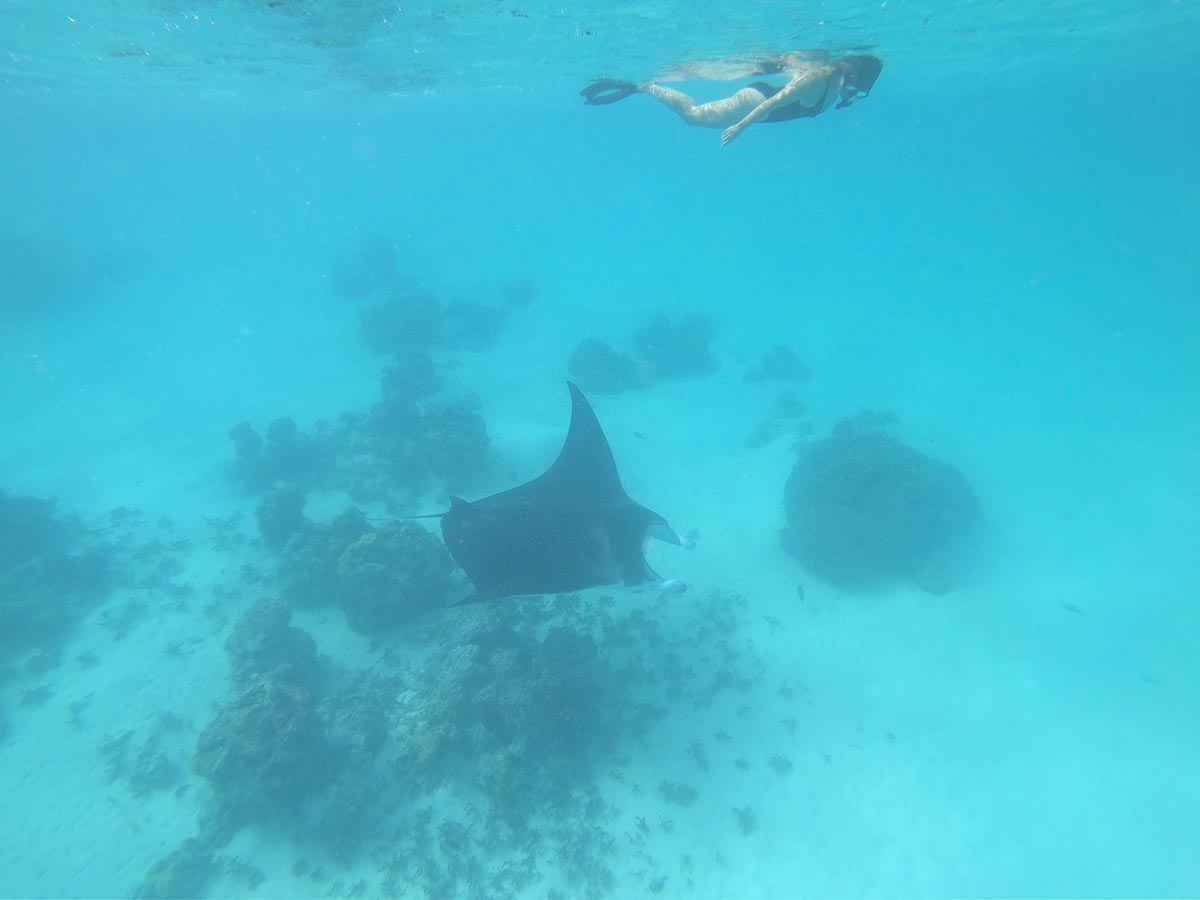
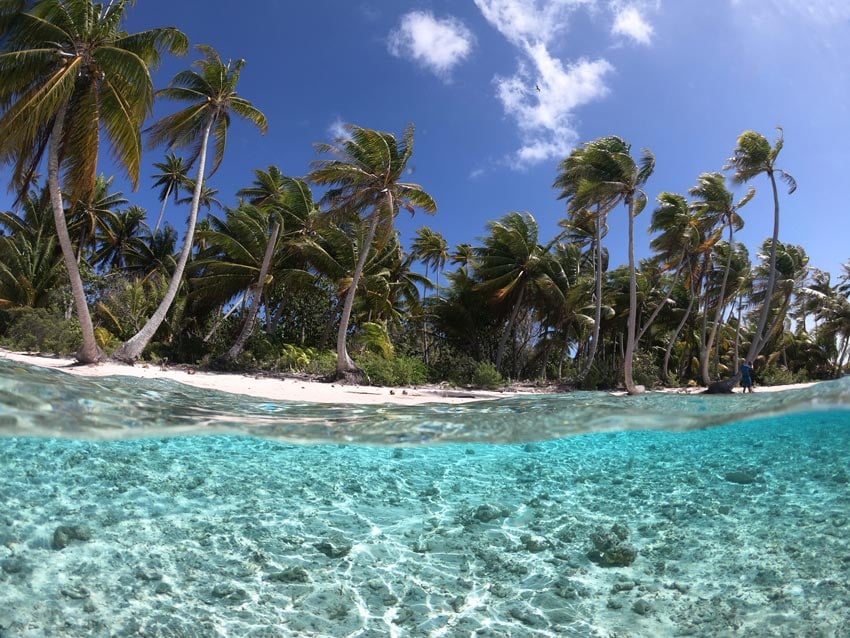
The Islands are Smaller
The islands of Tahiti are, for the most part, quite small when compared with those of Hawaii. But apart from Maupiti – which can be circled on foot in less than two hours – they are not that small. This means that hiring a car, scooter, or bicycle is the prime ingredient in a very pleasant road trip around the island. Driving times are perfect for completing a circle island tour while stopping here and there to enjoy the sights.
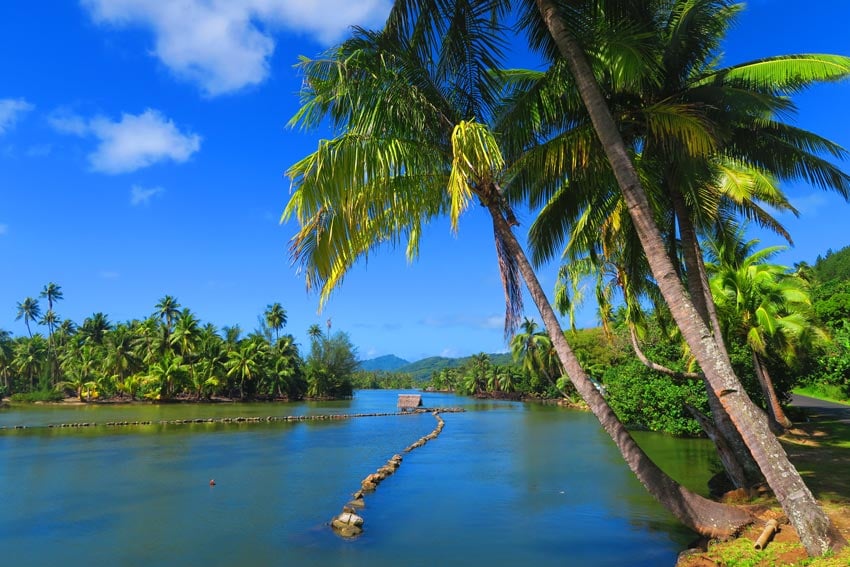
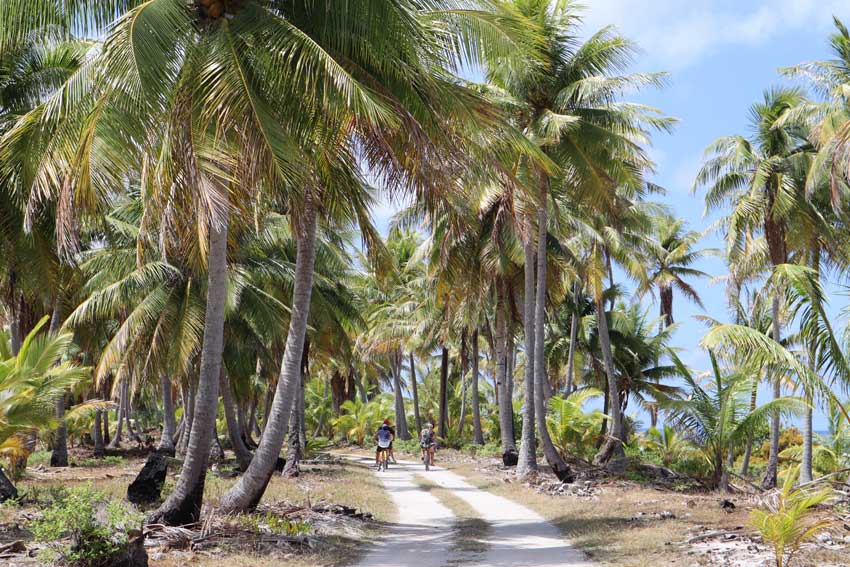
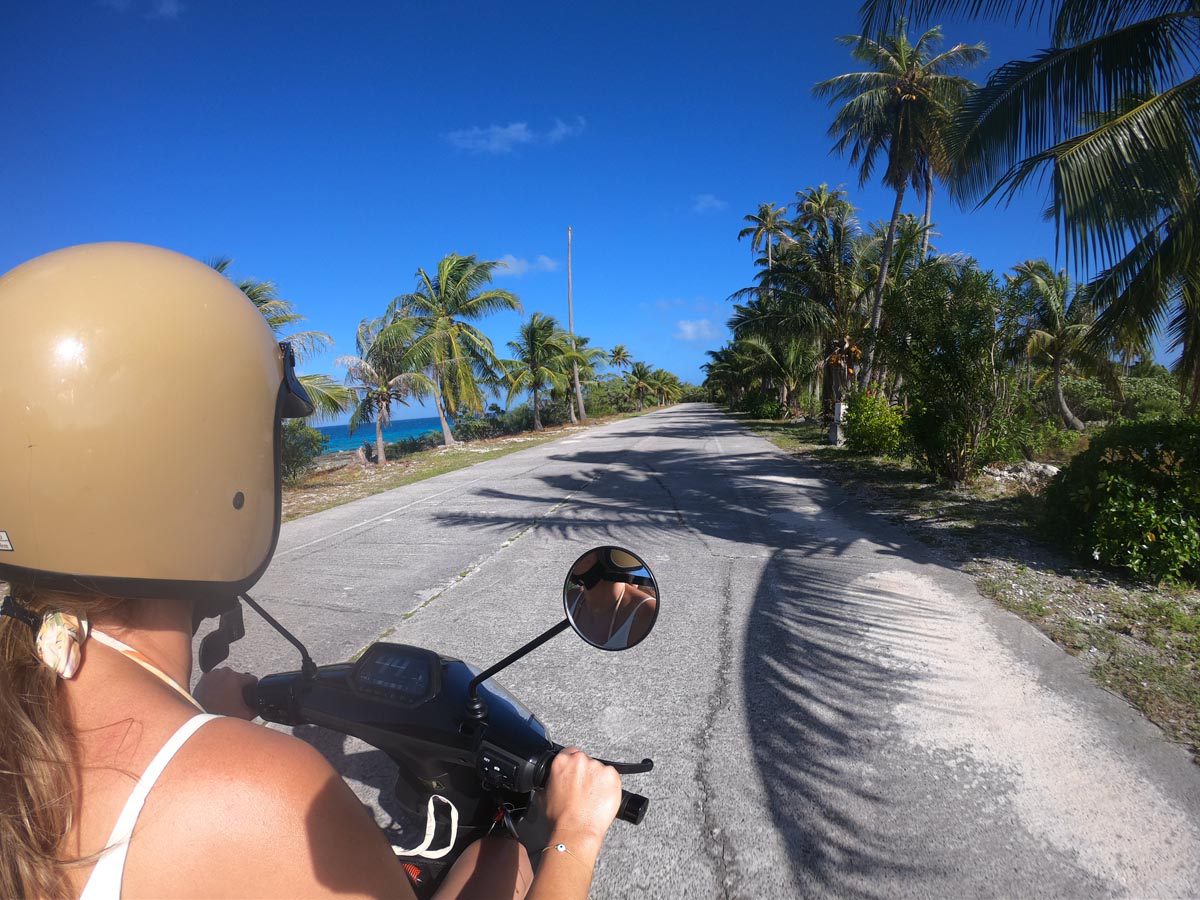
Tahiti’s Beaches are breathtaking
Though Hawaii has some pretty incredible beaches, they come nowhere near what you find in French Polynesia. First, Hawaii’s beaches are quite “sterile”, meaning the county officially maintains them with all that comes with that: overuse of signs, concrete facilities, gated parking lots, etc. Secondly, the beaches in Hawaii aren’t great for swimming: the water is often rough, the temperature is slightly on the chilly side, and there isn’t much to see underwater besides rocks that you need to be careful of. In contrast, the beaches of French Polynesia are the stuff dreams are made of, and you’ll often have them all to yourself!
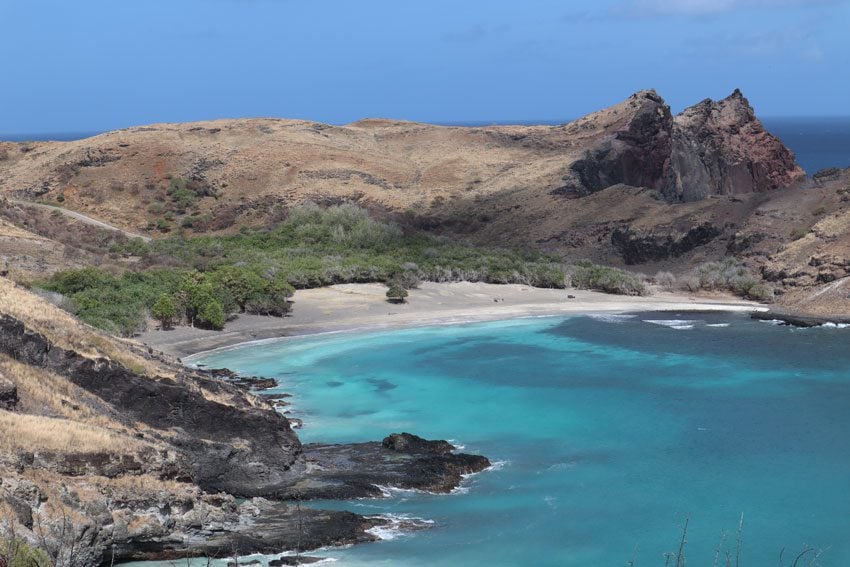
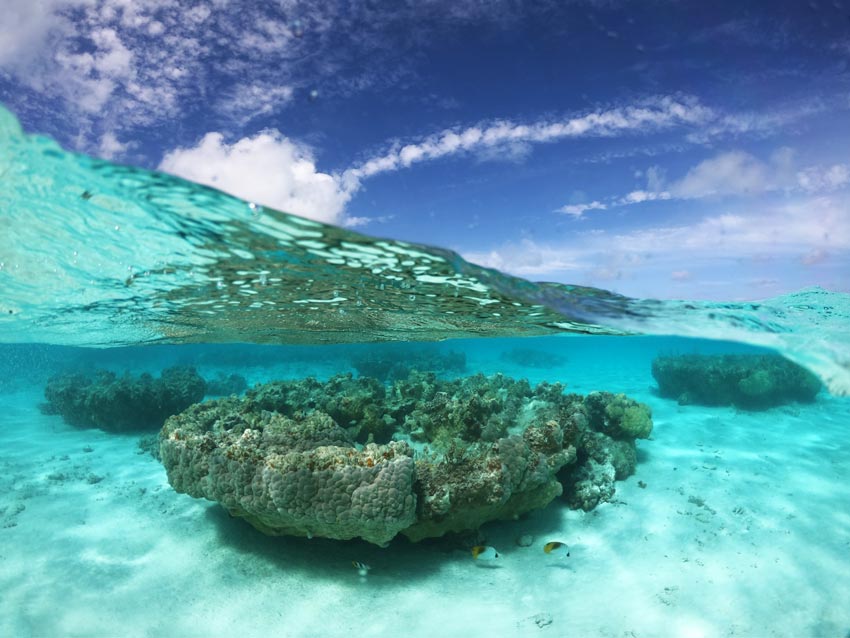
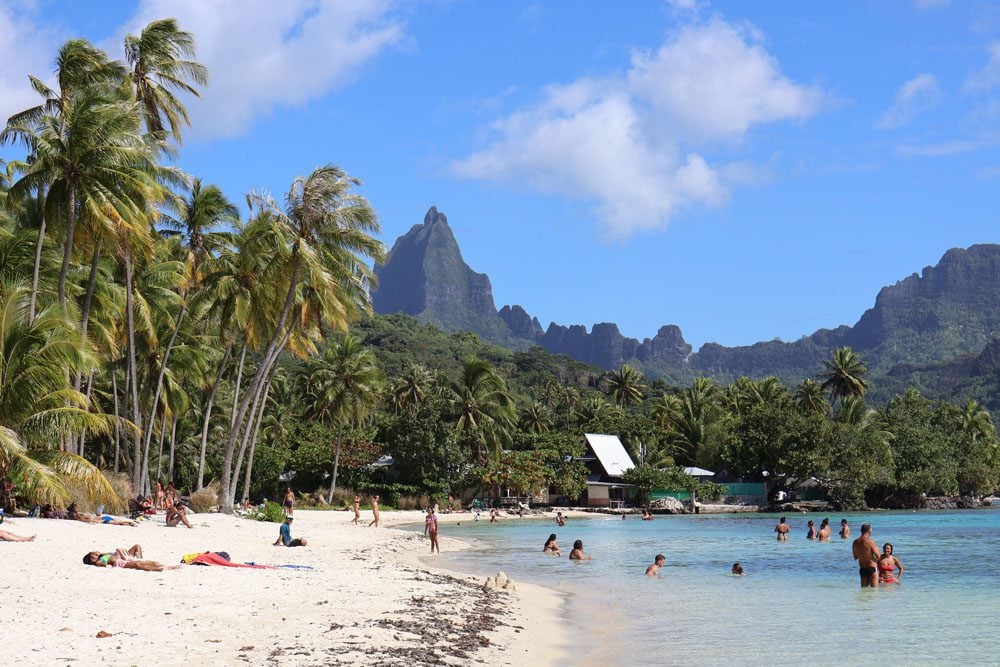
Snorkeling, Diving & Swimming With Whales
You don’t have to travel far to find a good snorkeling spot in French Polynesia. In fact, you should always have your mask and snorkel with you, just in case. Snorkeling in the coral gardens just off the beach is a great way to kill a few hours, and the spots reached by boat have the making of a memorable day, which usually includes a picnic lunch on a small islet (motu).
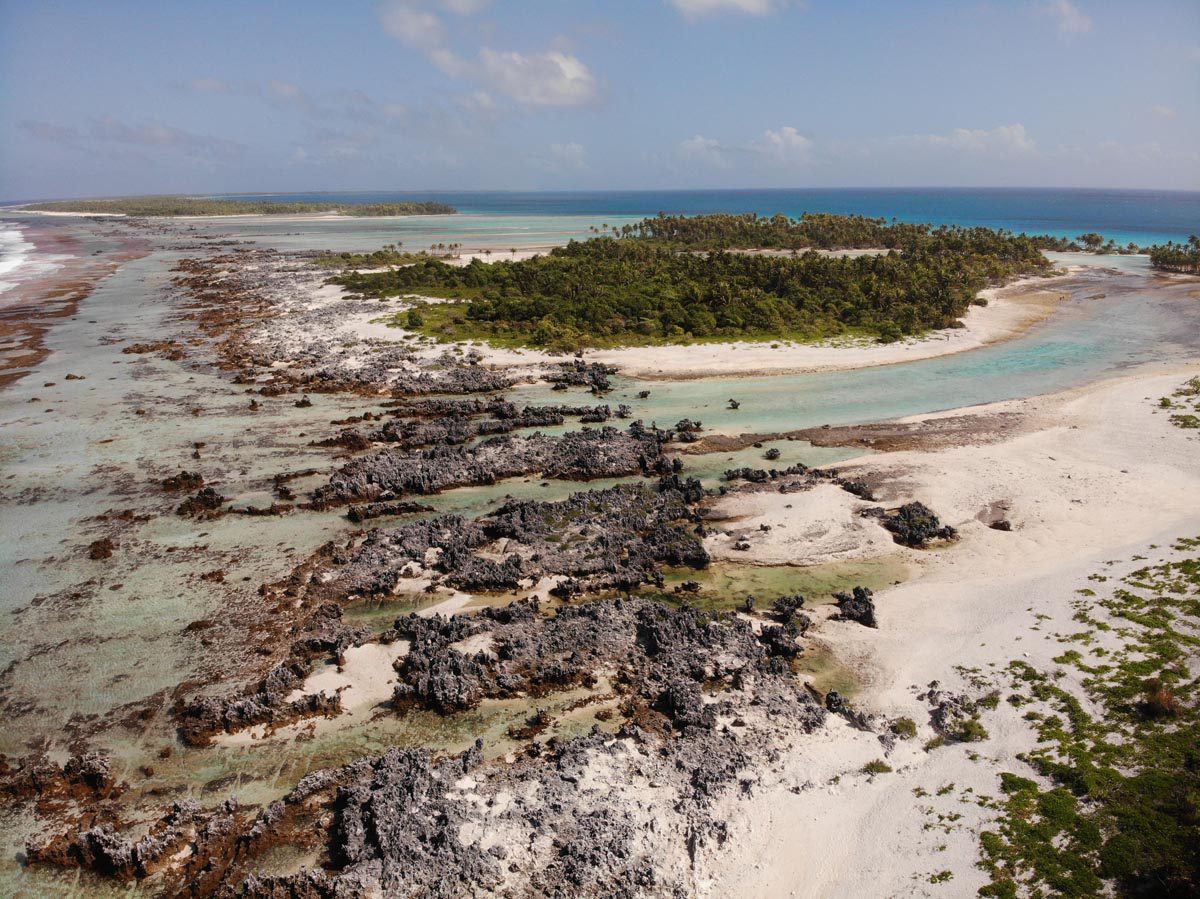
Snorkeling with sharks, tropical fish of all colors, and even manta rays isn’t uncommon! In the scuba diving department, French Polynesia is home to some of the best dive sites in the world, both in the Society Islands but especially in the atolls of the Tuamotus (Rangiroa, Tikehau, and Fakarava). From July to October, humpback whales visit French Polynesia to enjoy the warm waters, give birth, and mate. The best island to see and swim with whales is Rurutu, in the southern Austral Islands.
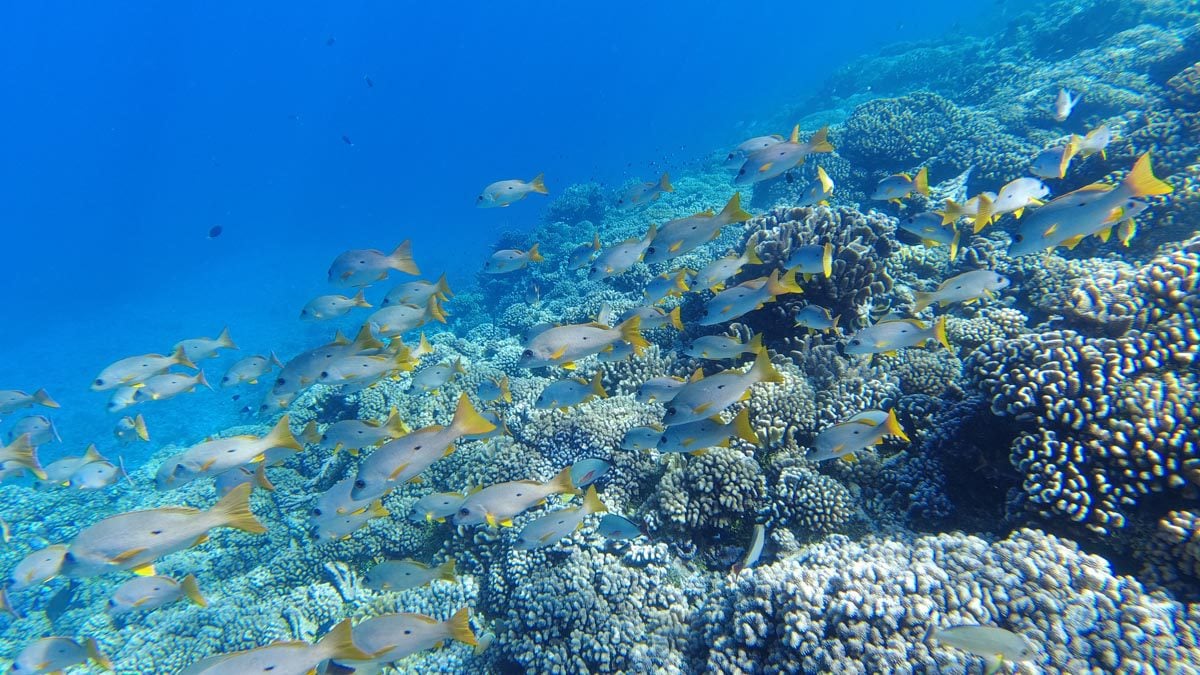
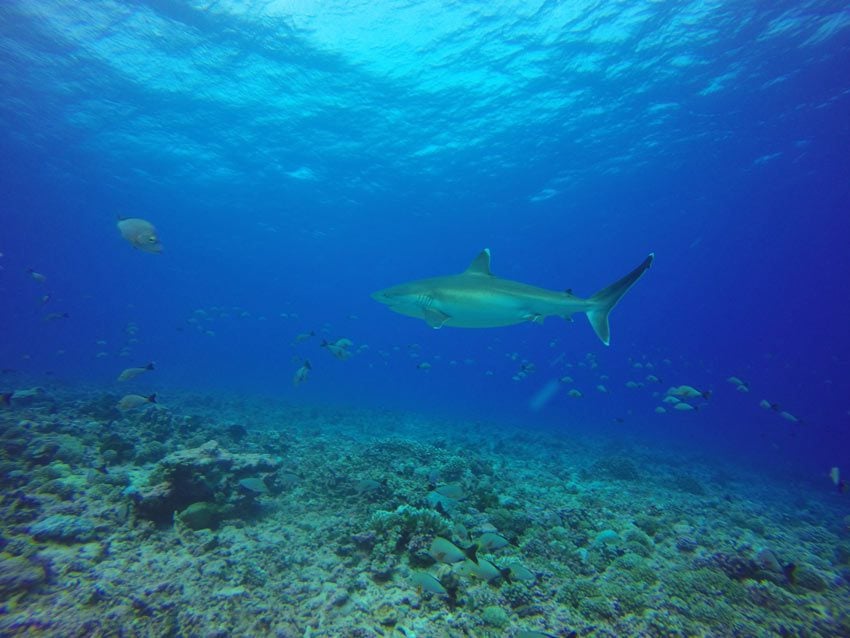
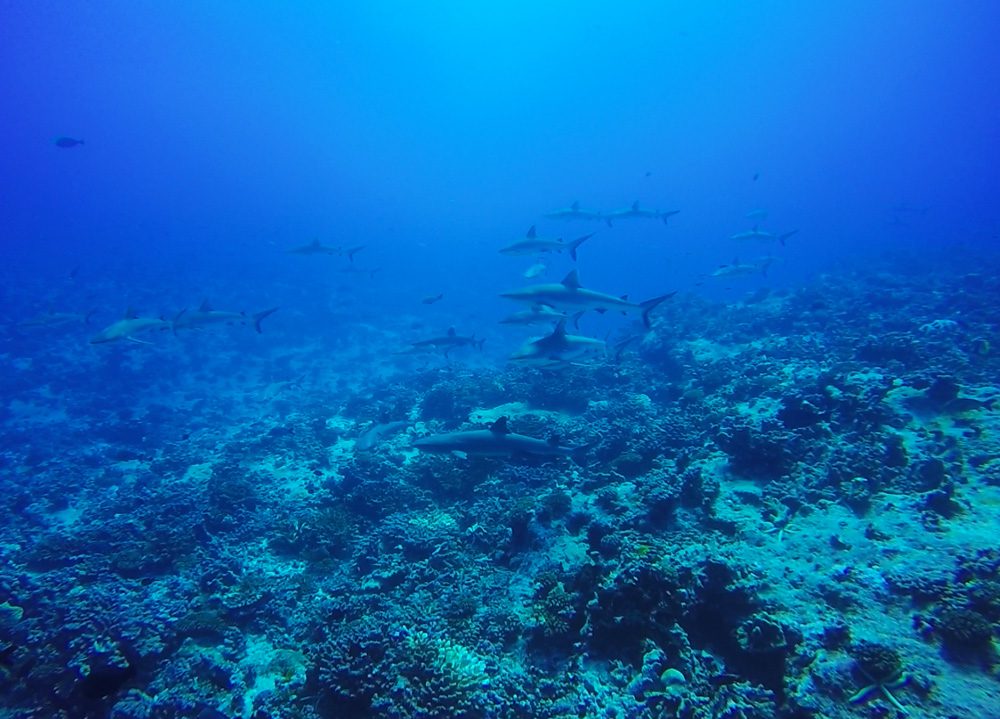
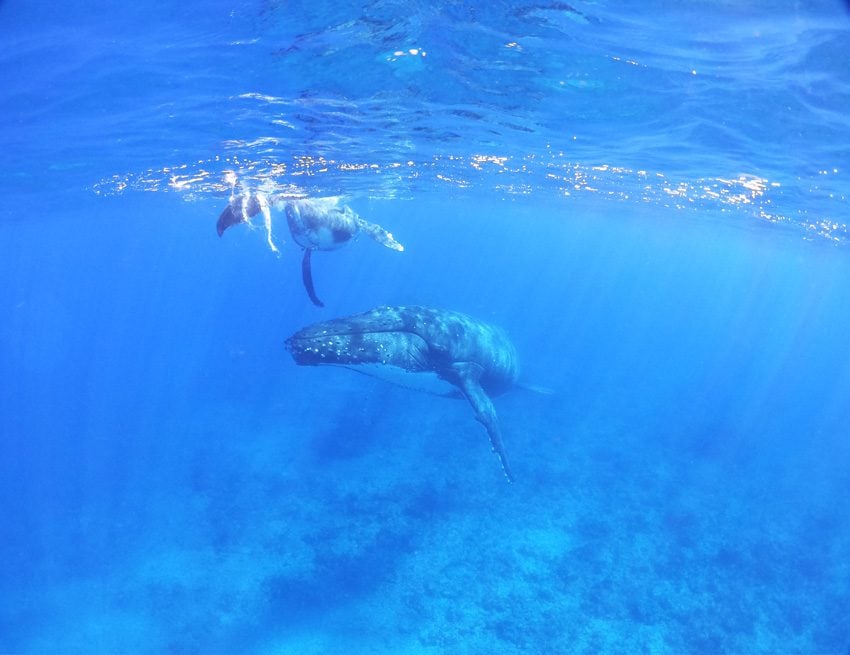
the Ancient Temples are impressive
The ancient Polynesian temples in Tahiti – called marae – are a lot more impressive than the “pile of rocks” you usually see in the Hawaiian Heiaus (no offense). In fact, French Polynesia is home to the most important ancient temple in the entire Polynesian Triangle – Marae Taputapuatea in Raiatea – and the best-preserved “tiki-statue” temples in both Nuku Hiva and Hiva Oa.
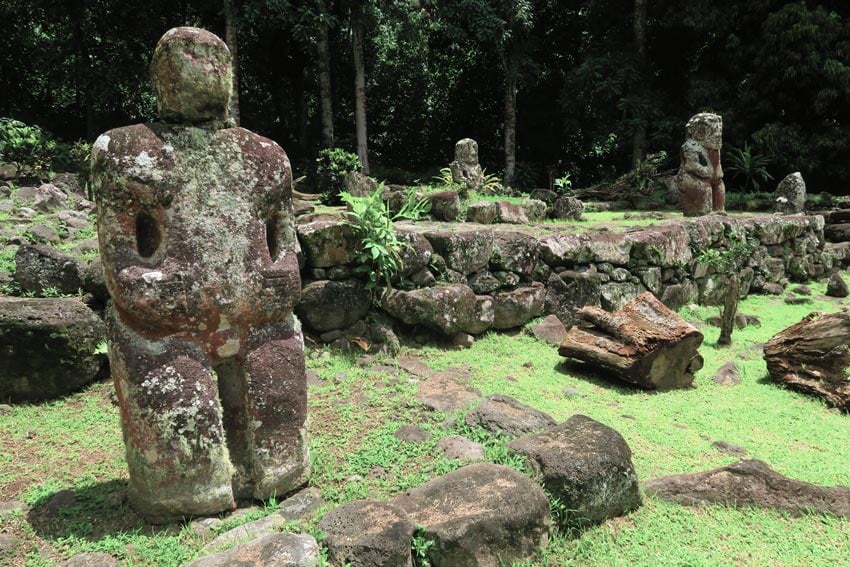
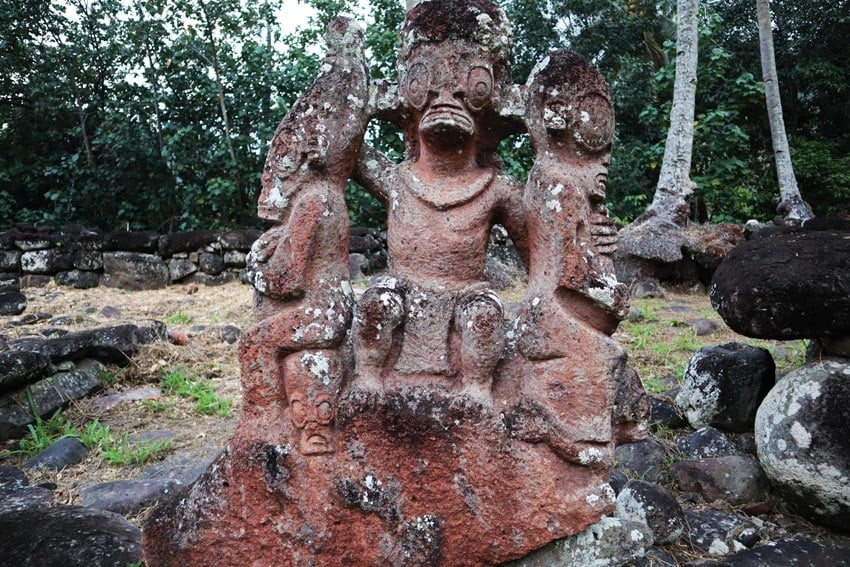
Edge of the World Feeling
I probably mentioned this already, but I just want to stress this again. The nature in the islands of Tahiti might be on par with that of Hawaii, but the main difference is that you’ll often have it all to yourself. Enough said, right?
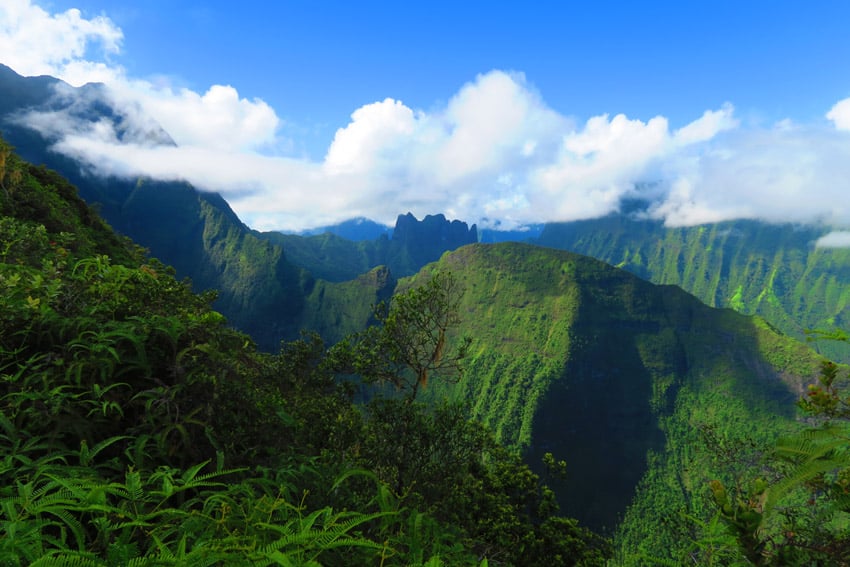
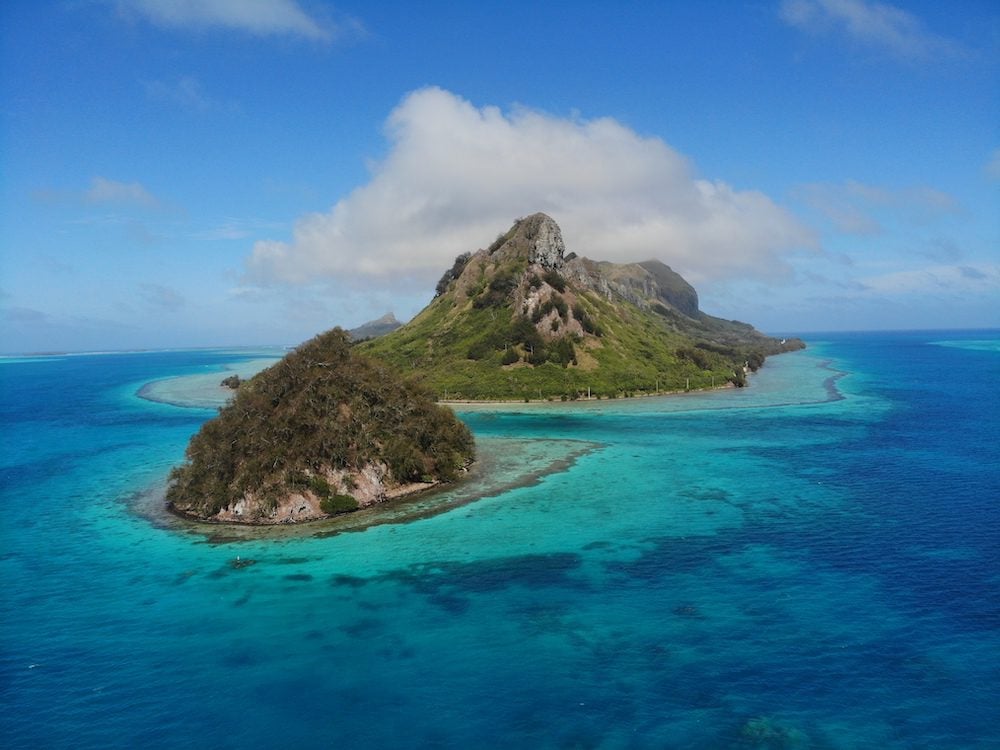
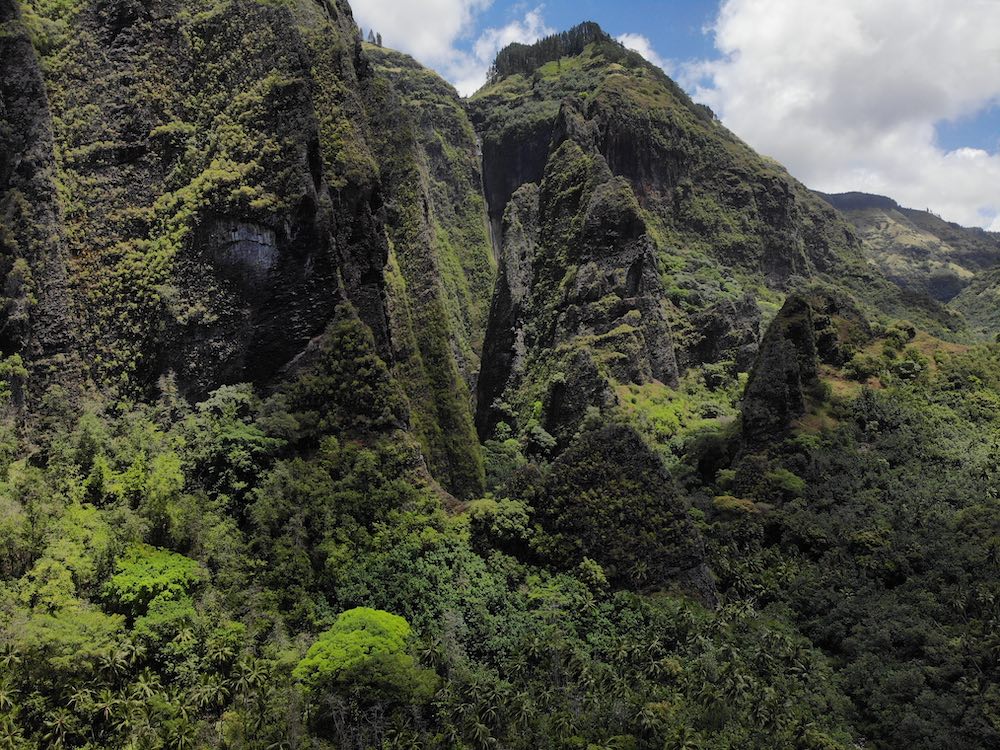
So, What’s The Verdict: Hawaii or Tahiti?
There’s no question in my mind: Tahiti easily trumps Hawaii in the quest for the ultimate paradise vacation. And though you might find cheaper airfare to get you to Hawaii, my experience tells me that Tahiti is cheaper than Hawaii for travelers. Investing just a few more hours on the plane and having to practice your French is well worth the effort! If you feel the same way and want to plan the ultimate escape to French Polynesia, get in touch, and let’s plan a tailor-made experience that exceeds your wildest dreams of paradise.
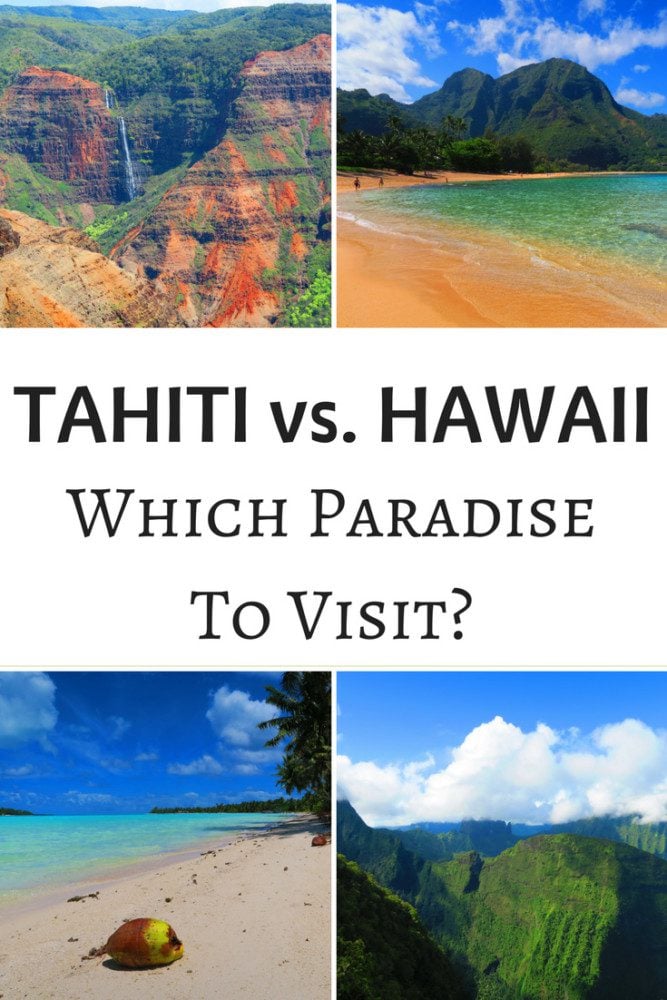
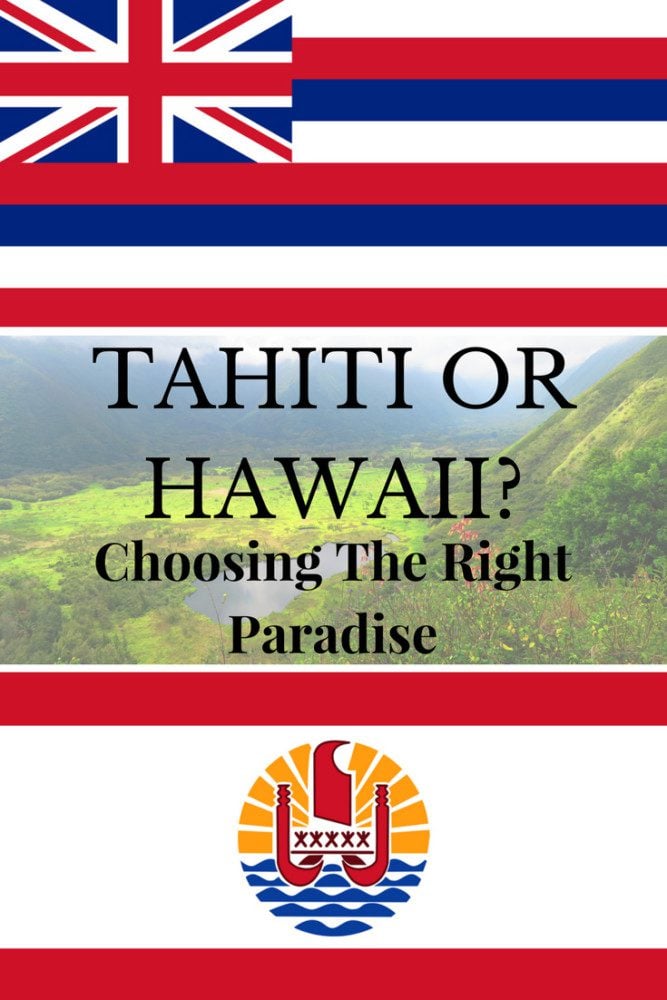
Pin These Images To Your Favorite Boards!
